Innotrans 2018: how will railway transport be tomorrow?

Hello! In September, I was fortunate enough to attend the Innotrans exhibition in Berlin, the world's coolest event dedicated to rail transport and railway infrastructure. Many of the technologies shown at the exhibition will be introduced only tomorrow, but something is being introduced and introduced today.
I will be glad to tell you in detail about what I saw. The story turned out to be voluminous, with a large number of photographs and facts. To begin with, I will clarify that the exhibition can be divided into two parts: stands in pavilions and on the street. The street part seemed to me the most impressive, since it was possible to visit the trains there, which were about to be released into mass production and implementation.
')
Let's start our fascinating walk through Innotrans 2018. You will learn a lot about the latest train and tram developments, accessibility of transport infrastructure for people with limited mobility, information systems used for designing stations, and finally, get acquainted with the incredible and atypical projects of future trains. Much attention will be paid to a comparison of approaches to infrastructure development in Russia and Europe.
(careful, traffic and a lot of photos)
For a start, take a walk through the street of the exhibition.
This is what the newest German tram looks like. Simple, concise, stylish. The tram has no steps, the floor fits perfectly with the platform. Everything meets the standards, because all the stopping complexes in Germany are built in such a way that the entrance to the tram is perfectly docked with the platform. Thus, a completely barrier-free environment is formed. A person with limited mobility should not feel worse than a healthy person. The norms are very strict, up to a centimeter.

The tram has terminals for selling tickets with the obligatory duplication of the interface into English and the support of modern payment technologies, including PayPass. You can also buy tickets directly on your smartphone using the app. There are no conductors in the mine (in Europe it is believed that having a special person for ticket sales is absolutely not economically viable).
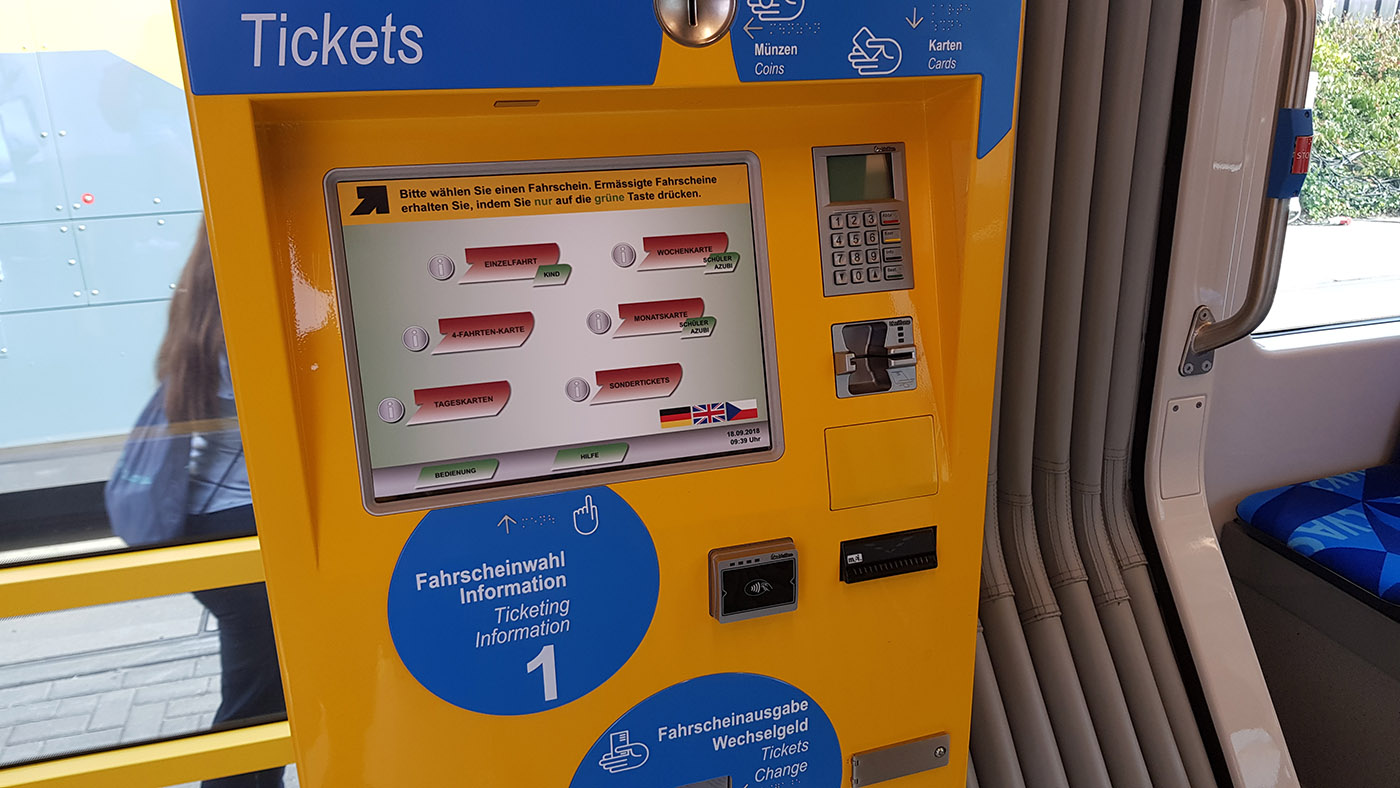
Much attention is paid to people with limited mobility. In Europe, accessibility is always in the first place; it is they who are told first of all when presenting something new. Any transport must be accessible to all.
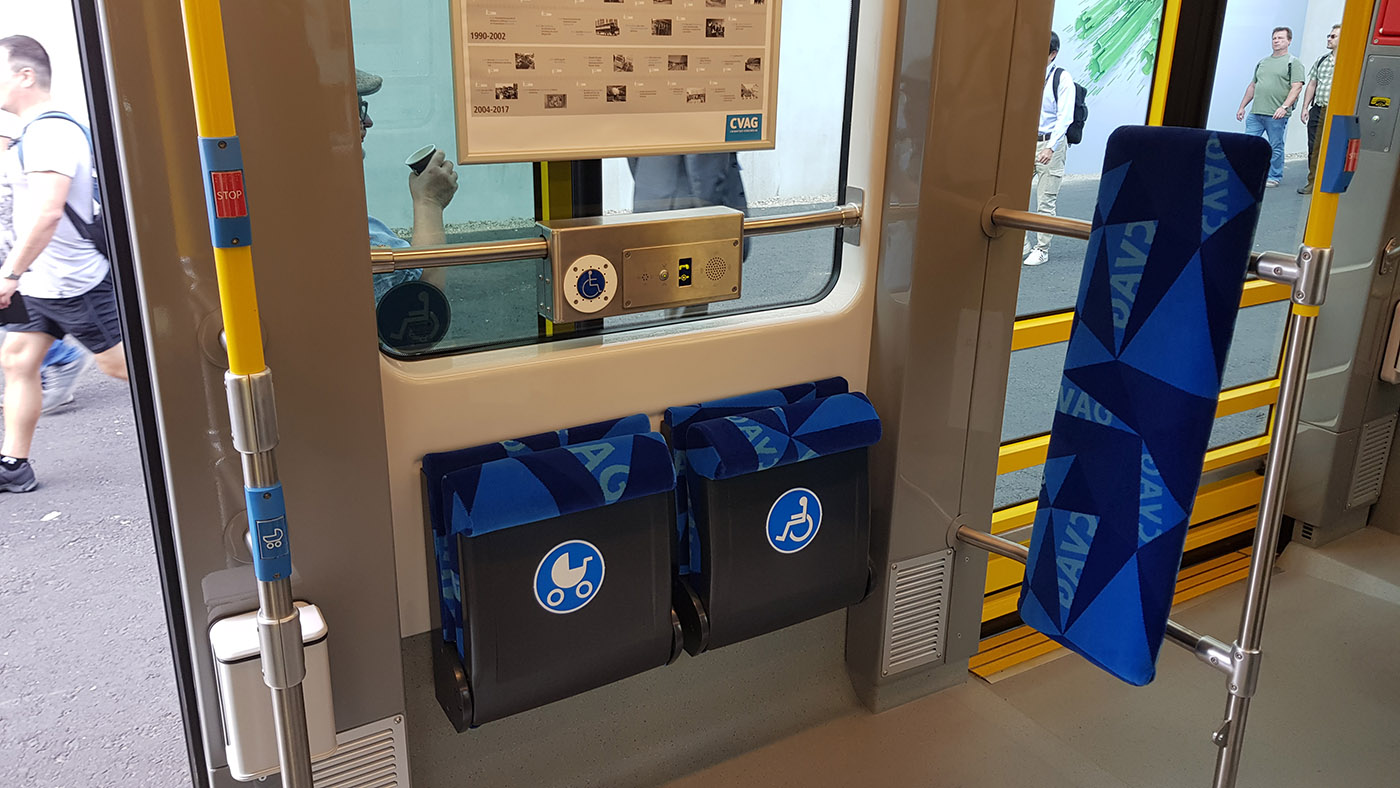
Cozy interior, information boards. Everything is done soundly and very German.
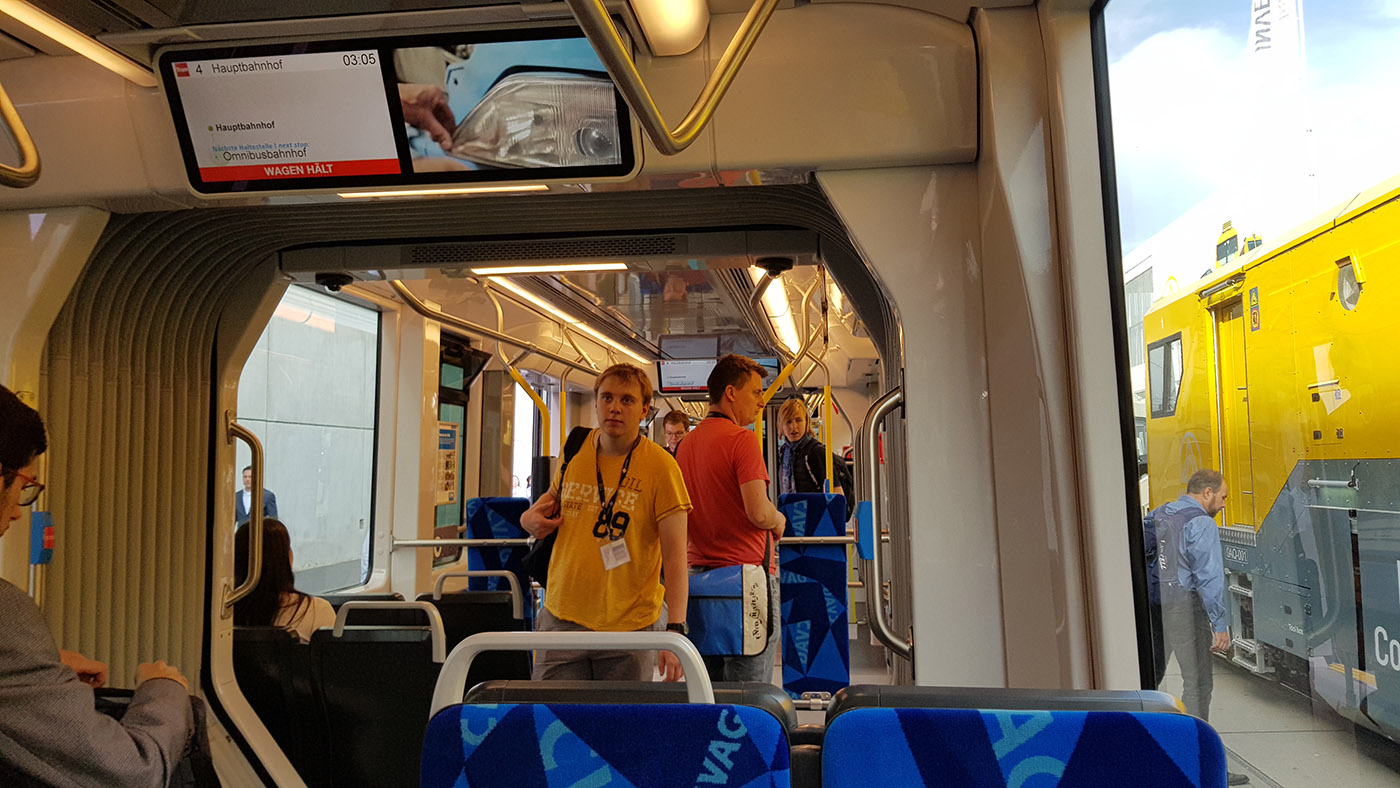
Cabin driver-tram. It's always great to be here, press the buttons, feel like a “real machinist”. When will this opportunity appear? Sorry, it was impossible to pound!
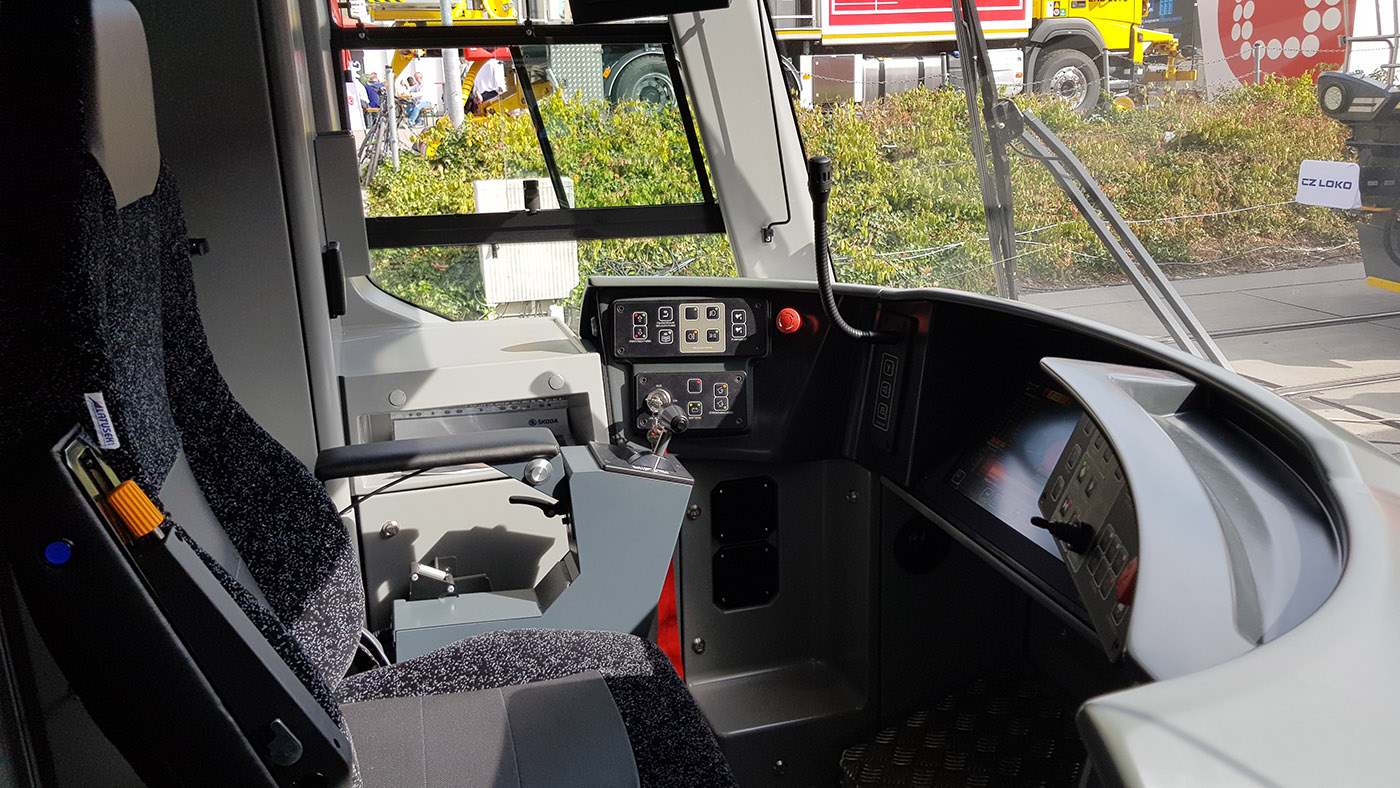
With all my negative attitude towards China, I liked the Chinese subway train surprisingly. In it, the Chinese, perhaps, surpassed themselves.
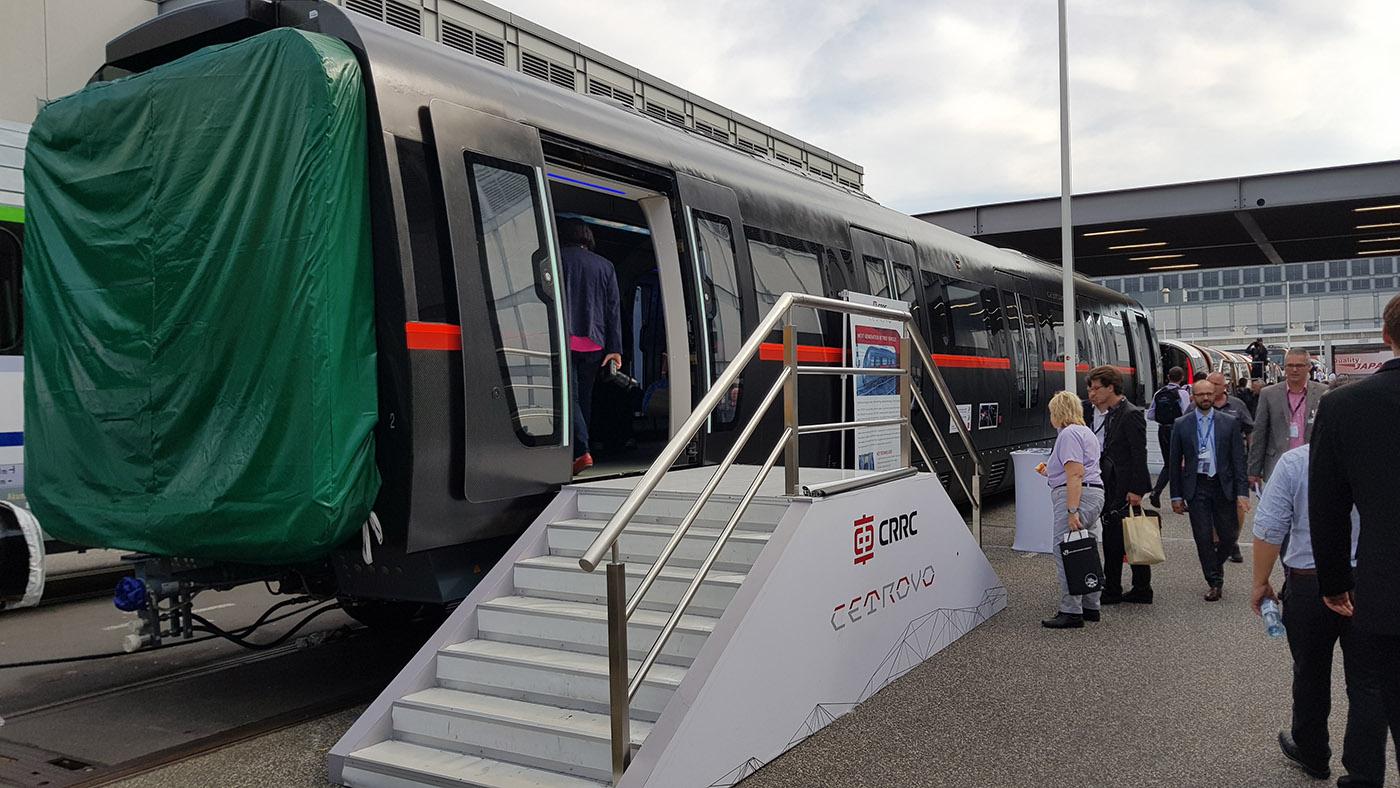
Outwardly, a very pretentious metallic design attracts from afar. 10 years ago, the Chinese would never have been able to do this, this is a typical Western style. Today, the Chinese can not just copy, but take significant steps forward, both visually and technically. Many of them receive quality education in the USA and Europe, return back to China and create truly innovative things.
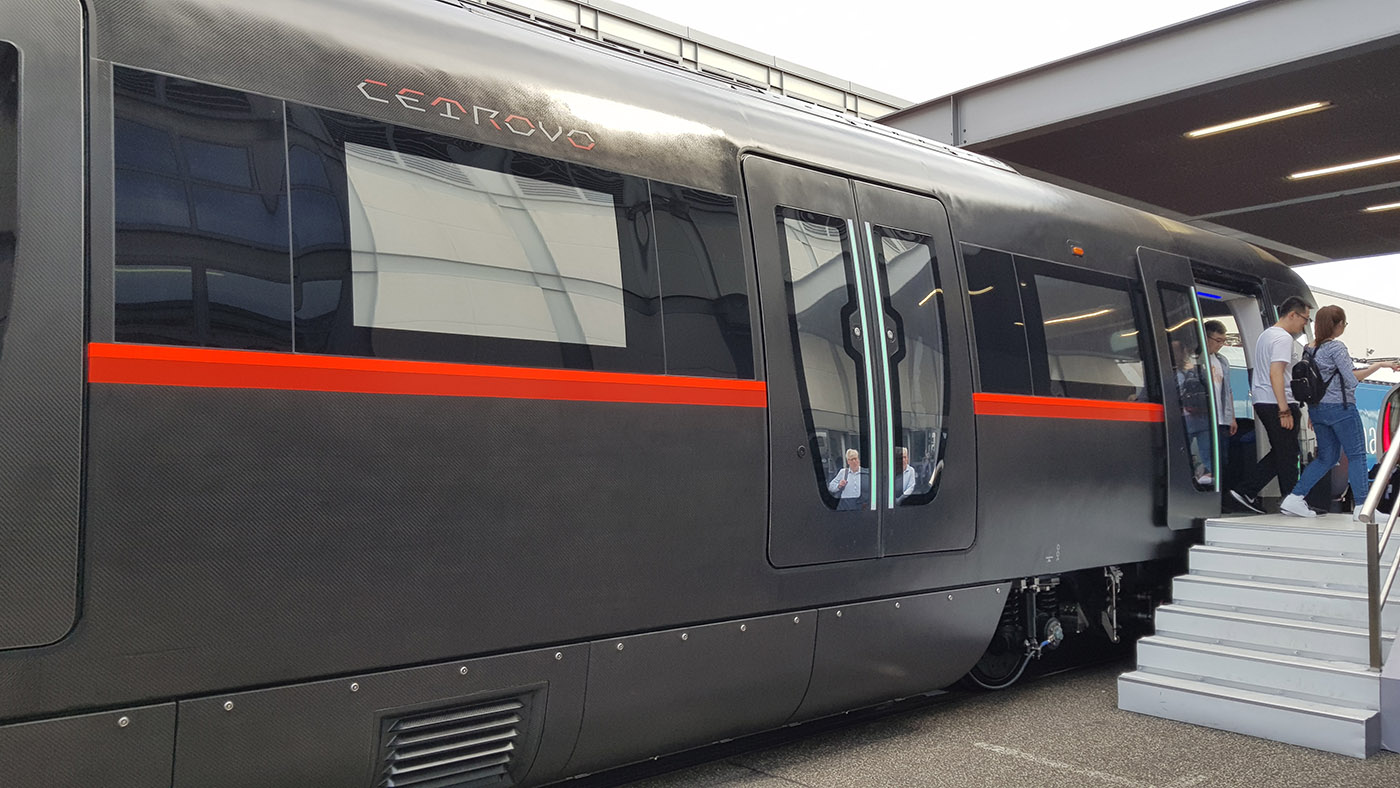
Another interesting idea of the Chinese. It looks like a normal transparent window, but it can suddenly also serve as an interactive screen, for example, for playing video. Thus, you no longer have to see the dull dark subway tunnel, it is much more pleasant to look at something else. And during a stop at the station, the window becomes transparent again.
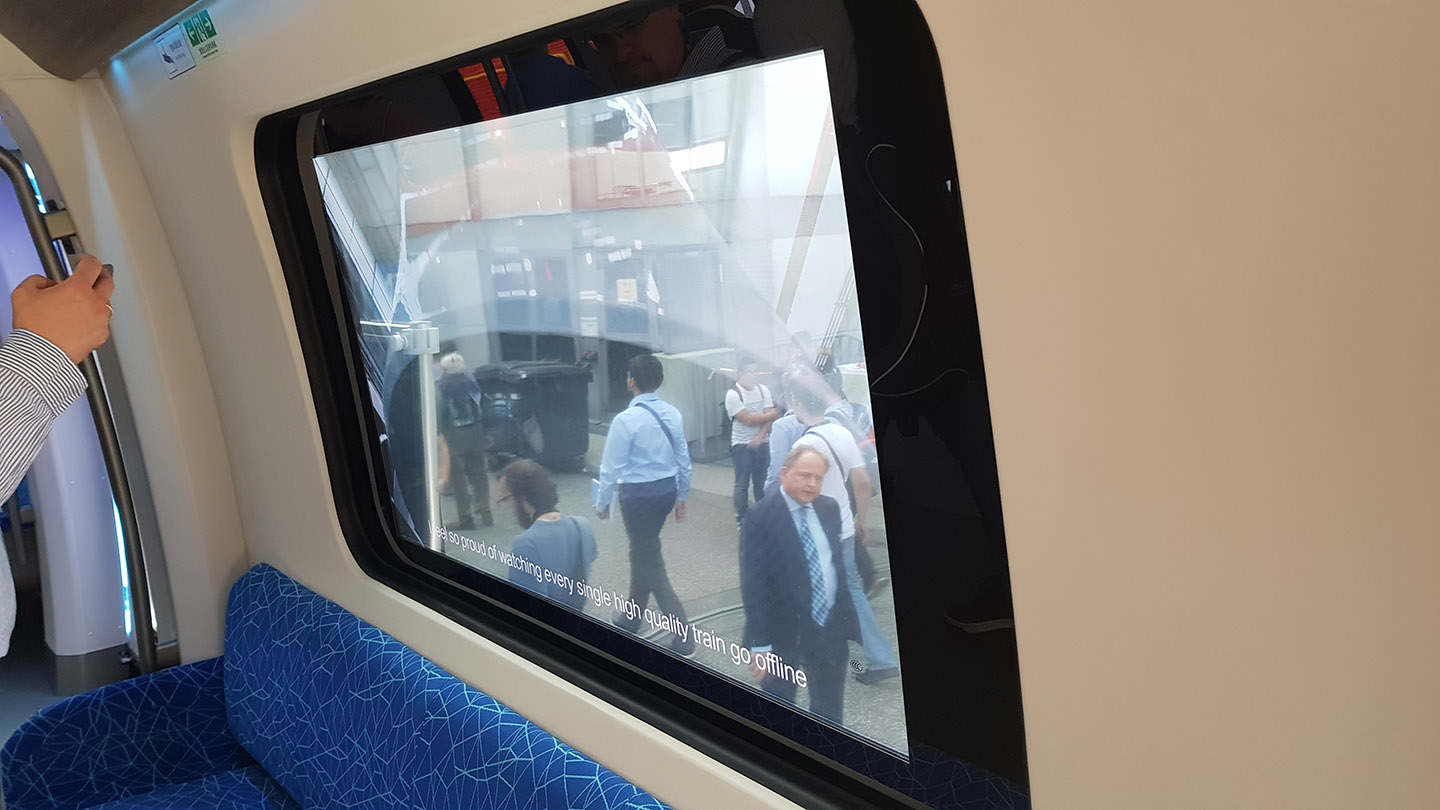
How is all this done? Through the usual Android interface. All ingenious is simple. The main thing is to work.
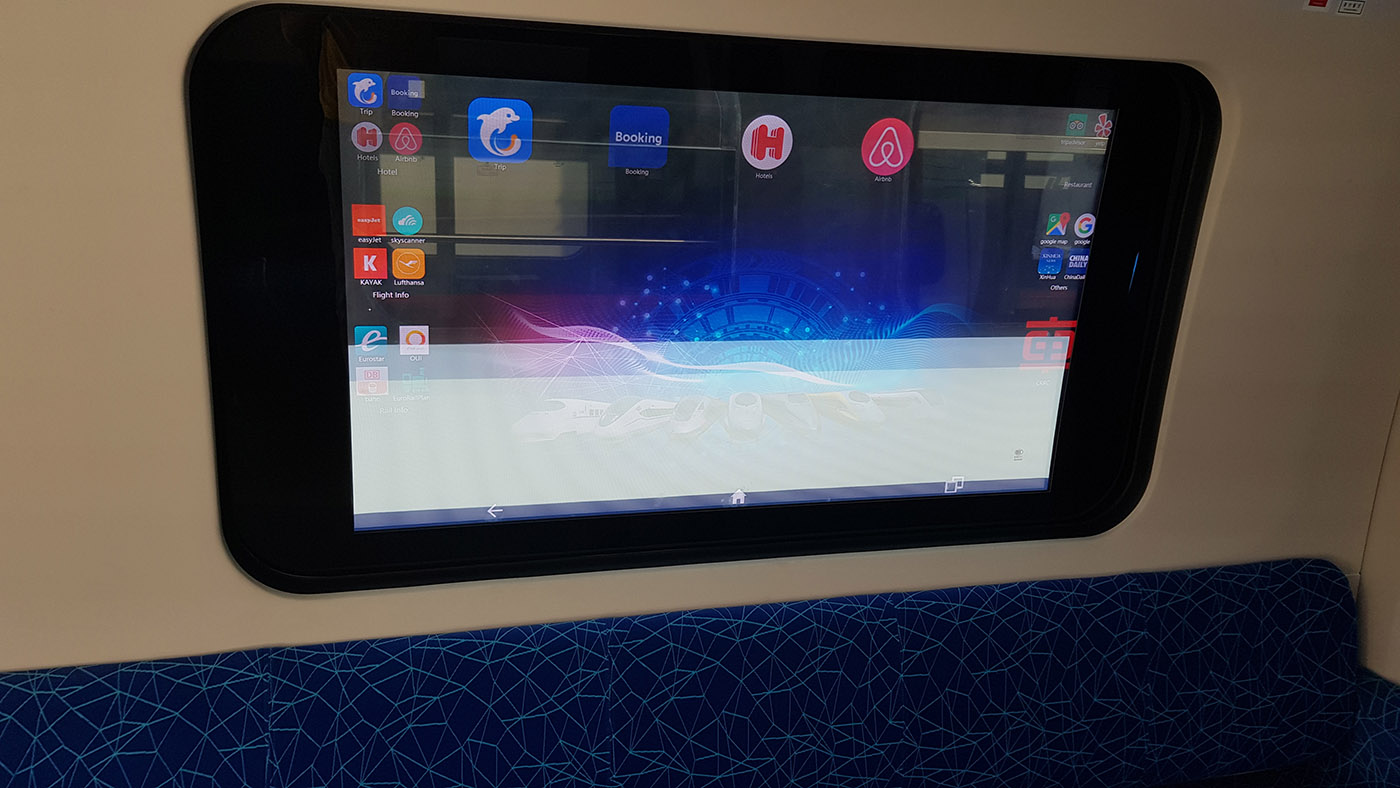
This is how it looks from afar. I do not know about you, but I really wanted to ride this train! True, the backs of the seats are too low - uncomfortable.
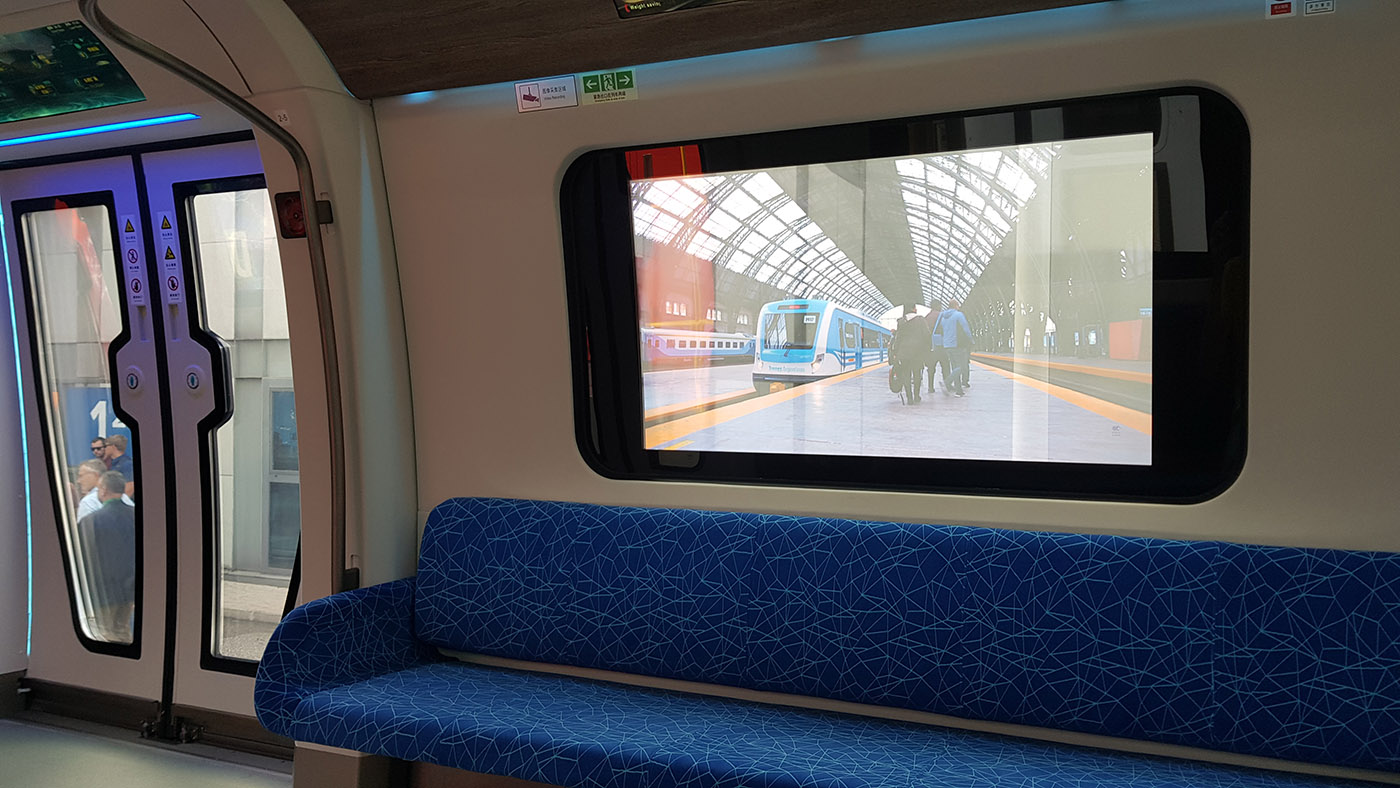
No lagged in quality and products of other countries. Trains for the Czech Republic, Hungary, Austria, Switzerland were presented. I suggest just to look at some photos, without burdening them with unnecessary comments. Absolutely all trains are designed to be comfortable for passengers, including those with limited mobility.

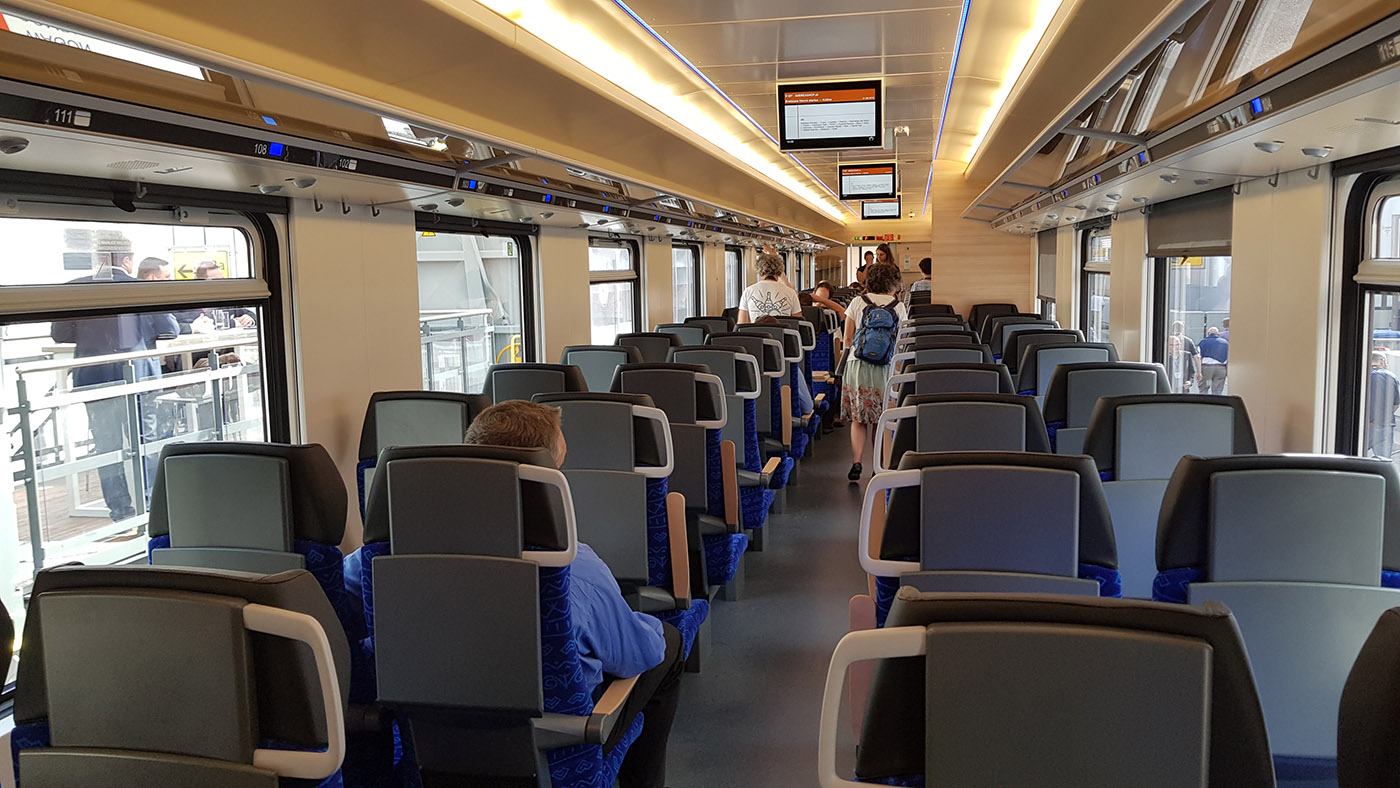

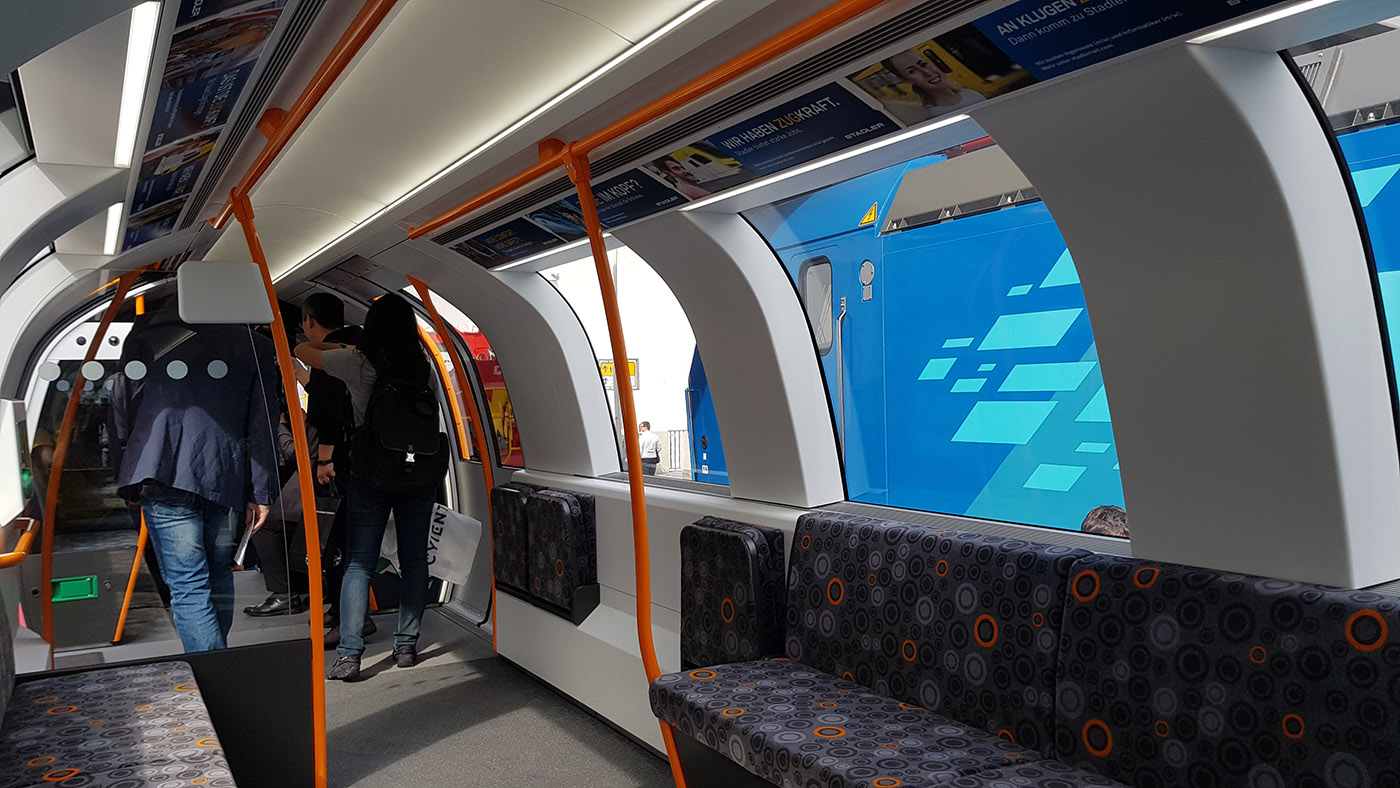


The previous photo showed a Swiss regional train car. In it, I saw an unusual piece: when there is a bright sun outside, you can press a button and the window is shaded. An interesting solution is also a good alternative to the Chinese “screens”. No curtains are needed anymore.
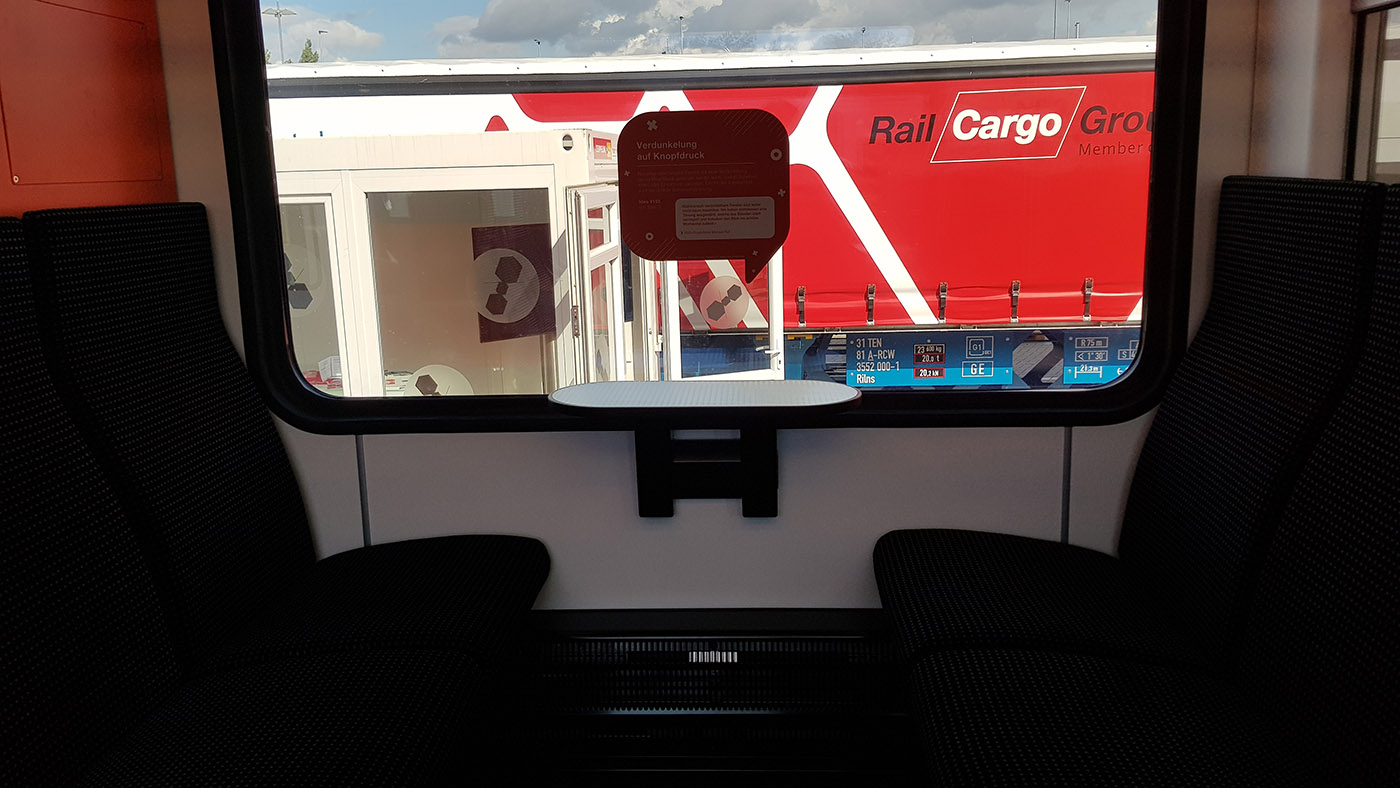
The exhibition also showed the latest Russian trams. Technologically, there is nothing special about them. I do not know how to explain, but the feelings in them are different. Simplified, "cheaper."
But now in the Russian trams there will be places for people with limited mobility, and the floor according to the project must dock with the platform. It is a pity that the suitable platforms themselves are not built anywhere except in the center of Moscow and St. Petersburg. In Russia, the so-called "disabled" (recall the translation of the word invalid - "wrong") is still one thing: disregard.
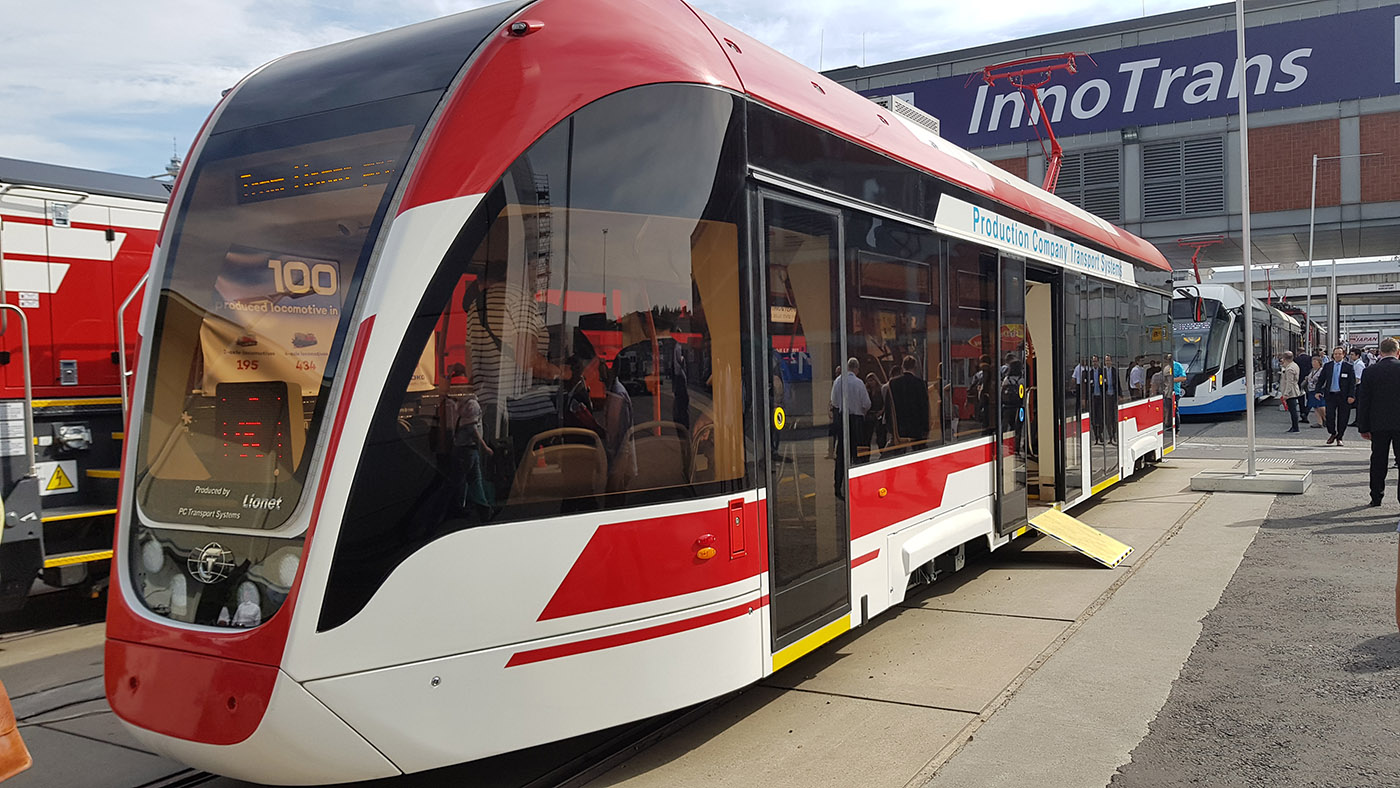
They said that in Moscow, these trams will be launched in the same year. Everything is good, but why only in Moscow? Why do you have to start with the capital? Why not from Volgograd, not Izhevsk, not Omsk? Logical questions that people in Russia rarely ask. In Germany, on the contrary: at first, such innovations are introduced in small towns with several thousand people, and only then they reach Munich and Berlin.

Disappointed seats, they are uncomfortable, as in the old Moscow public transport. Really it was impossible to put comfortable, soft? I hope this will be fixed in future models.
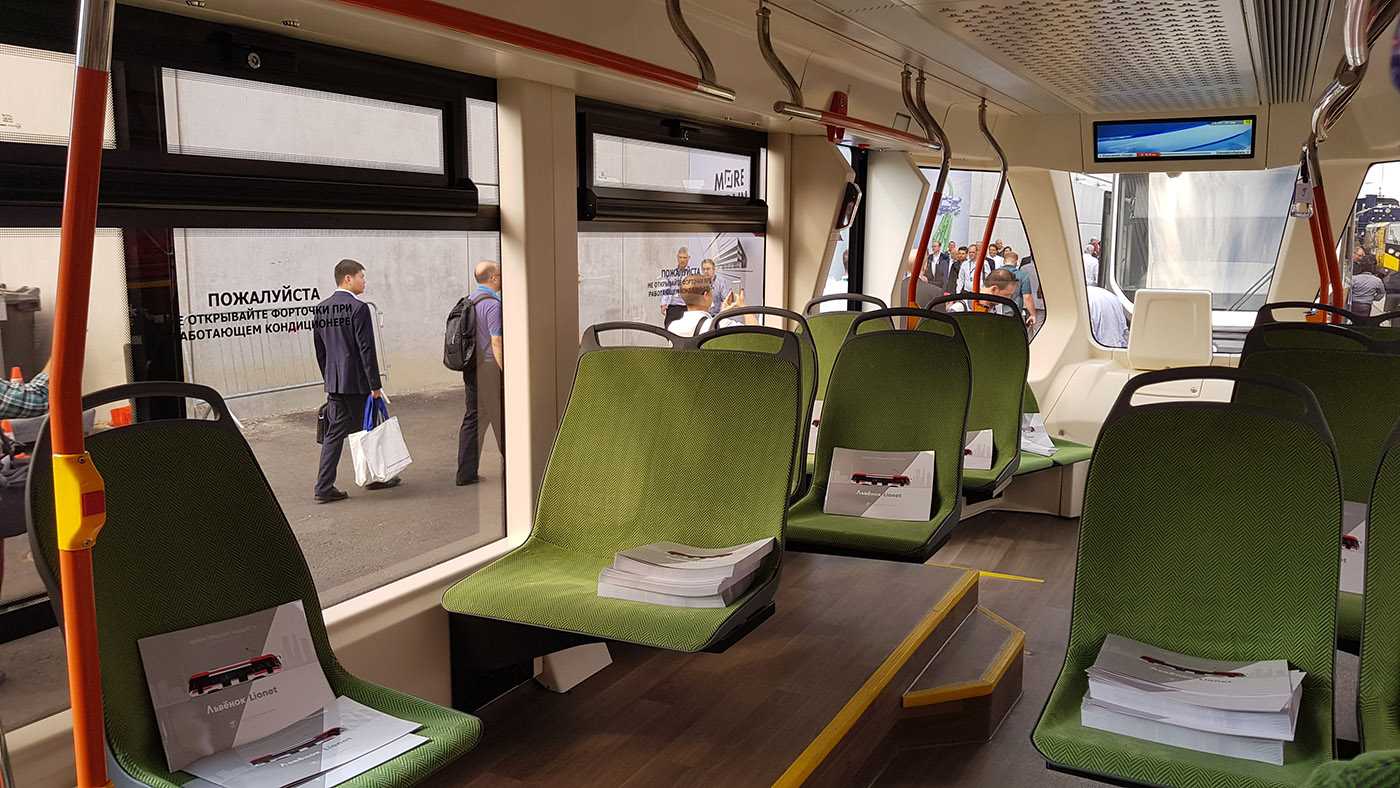
Even the Russian trams are distinguished by very strange names that are evident to those who do not know the Russian language. But more about that later.
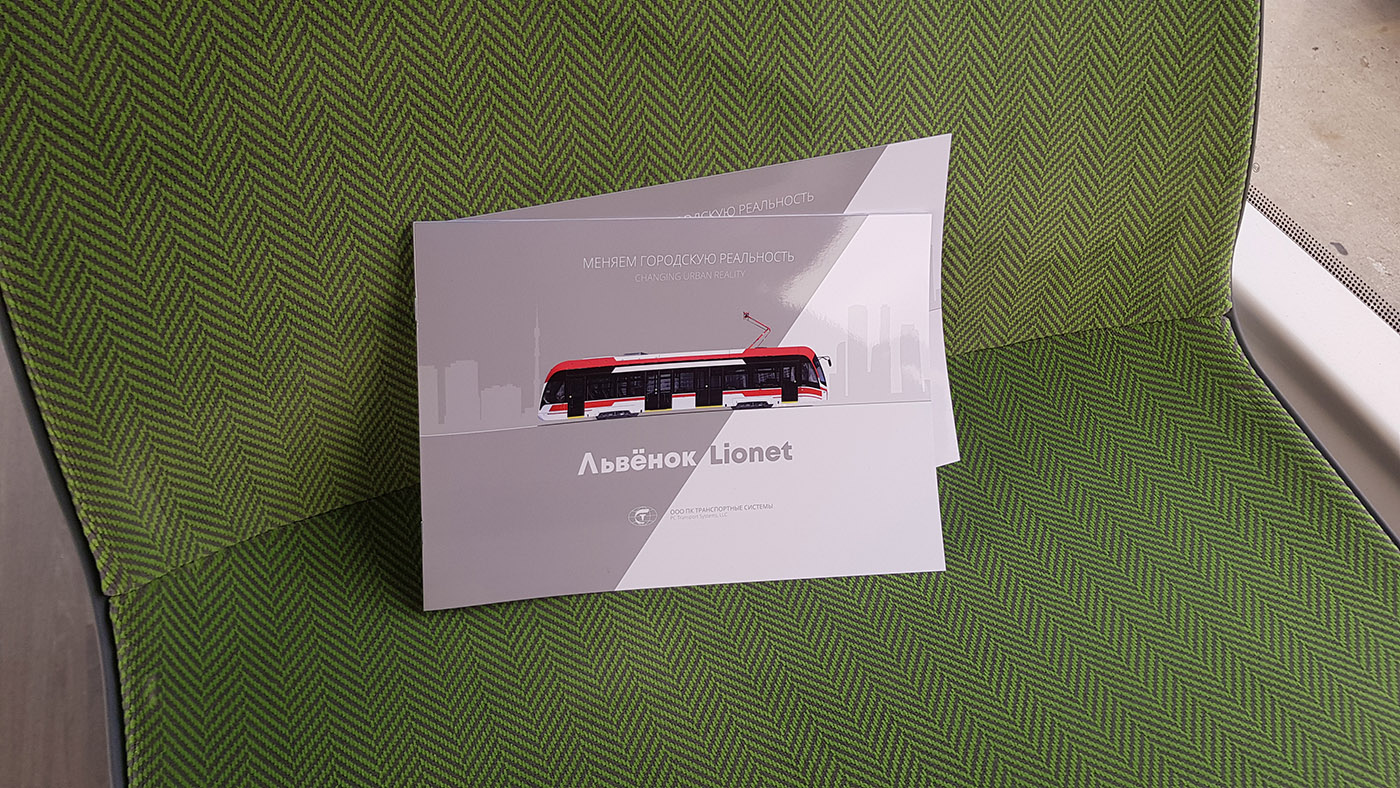
The exhibition also featured locomotives of international manufacturers.
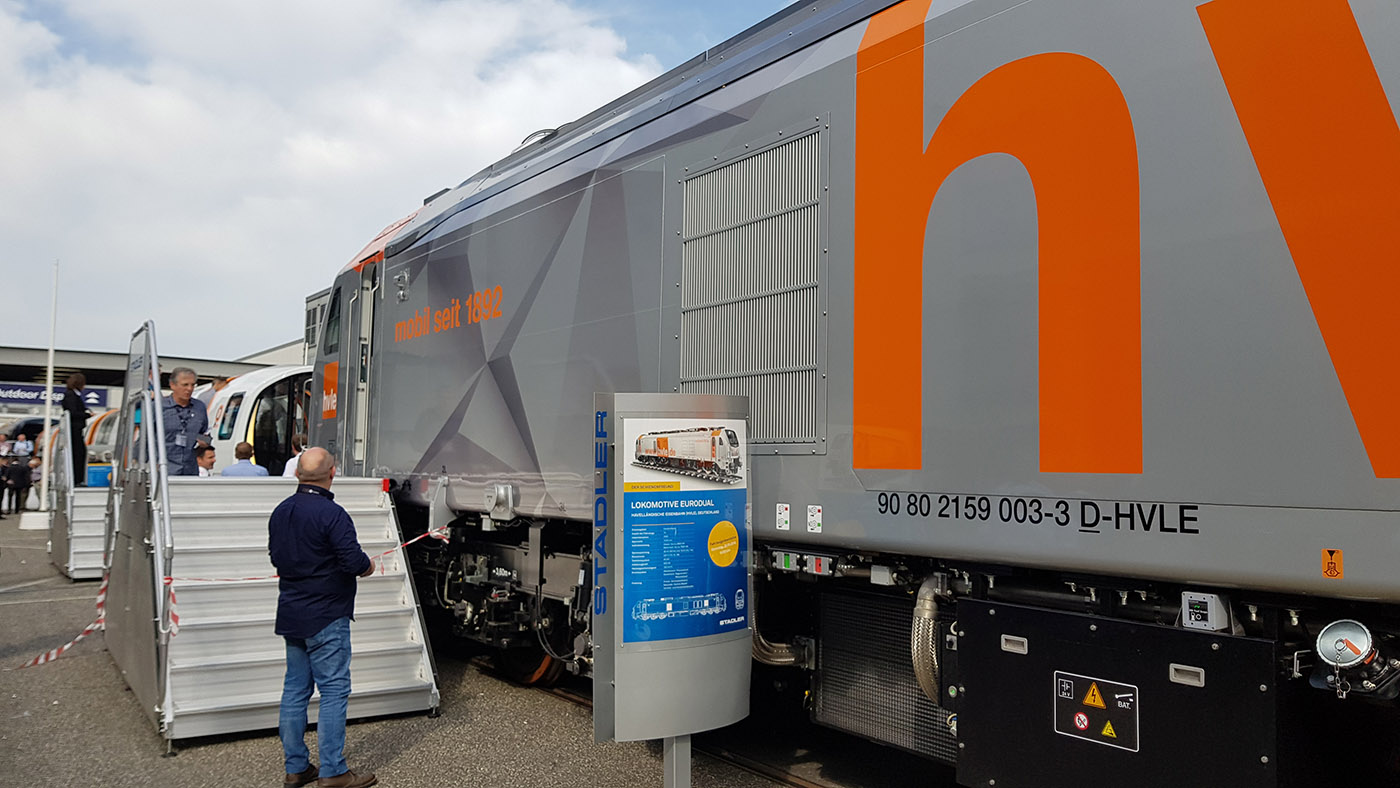

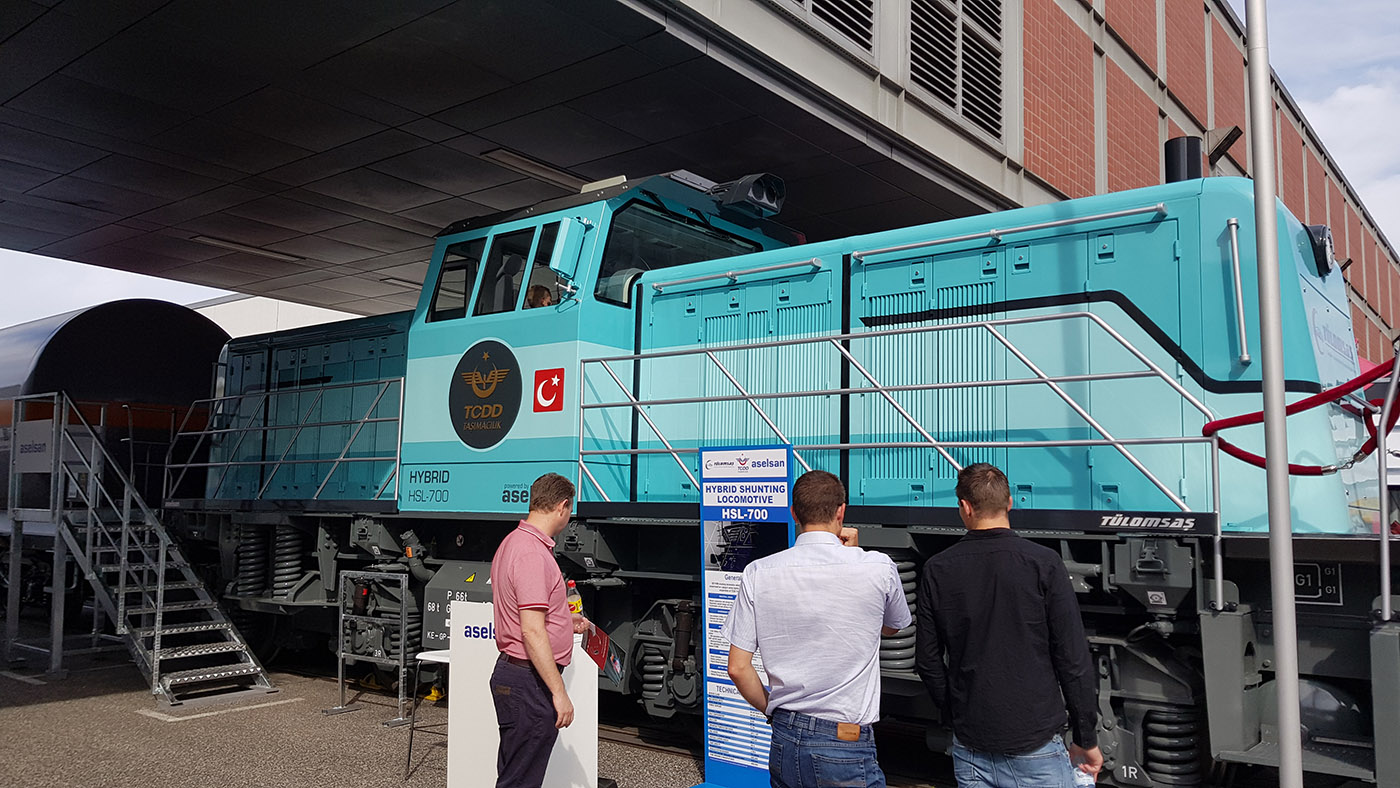
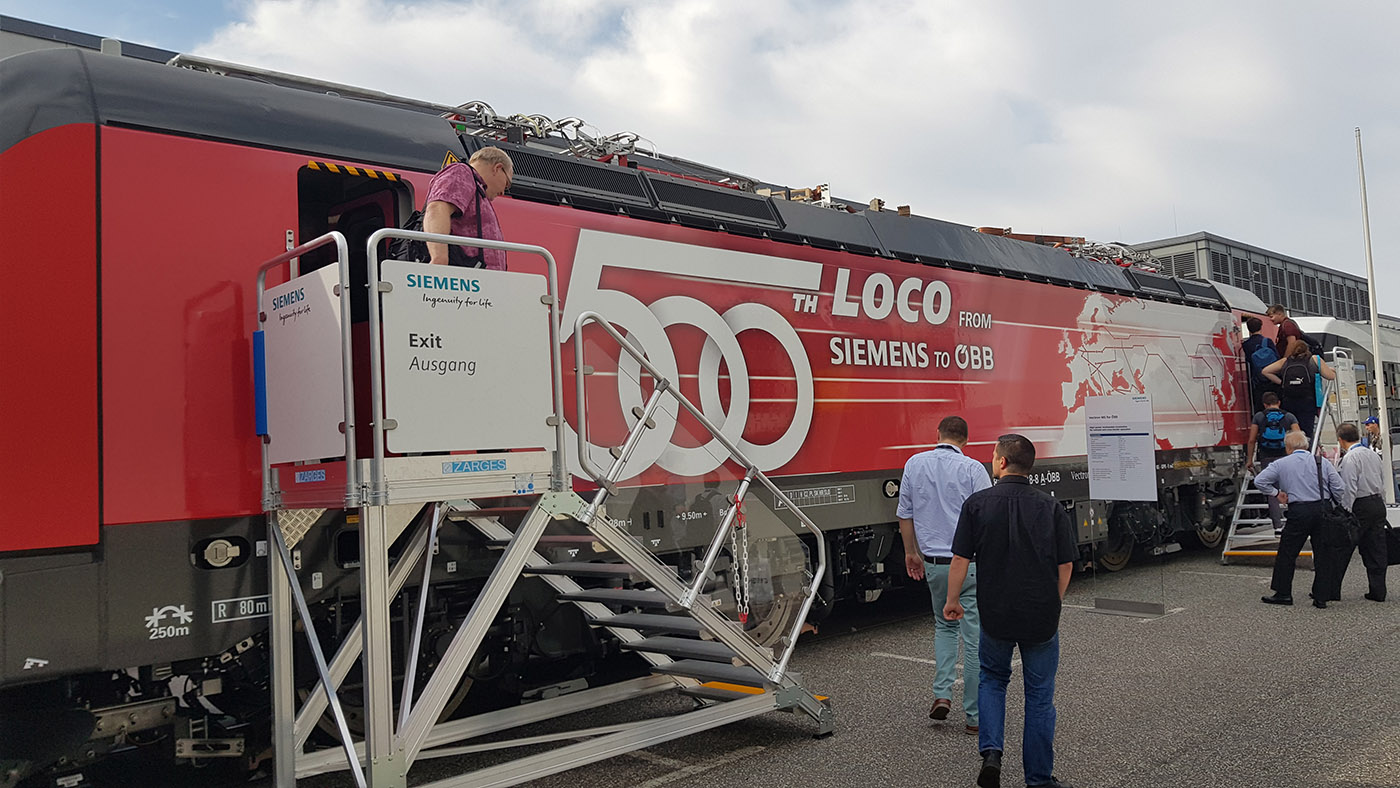
You could go inside, see how everything is from the inside.
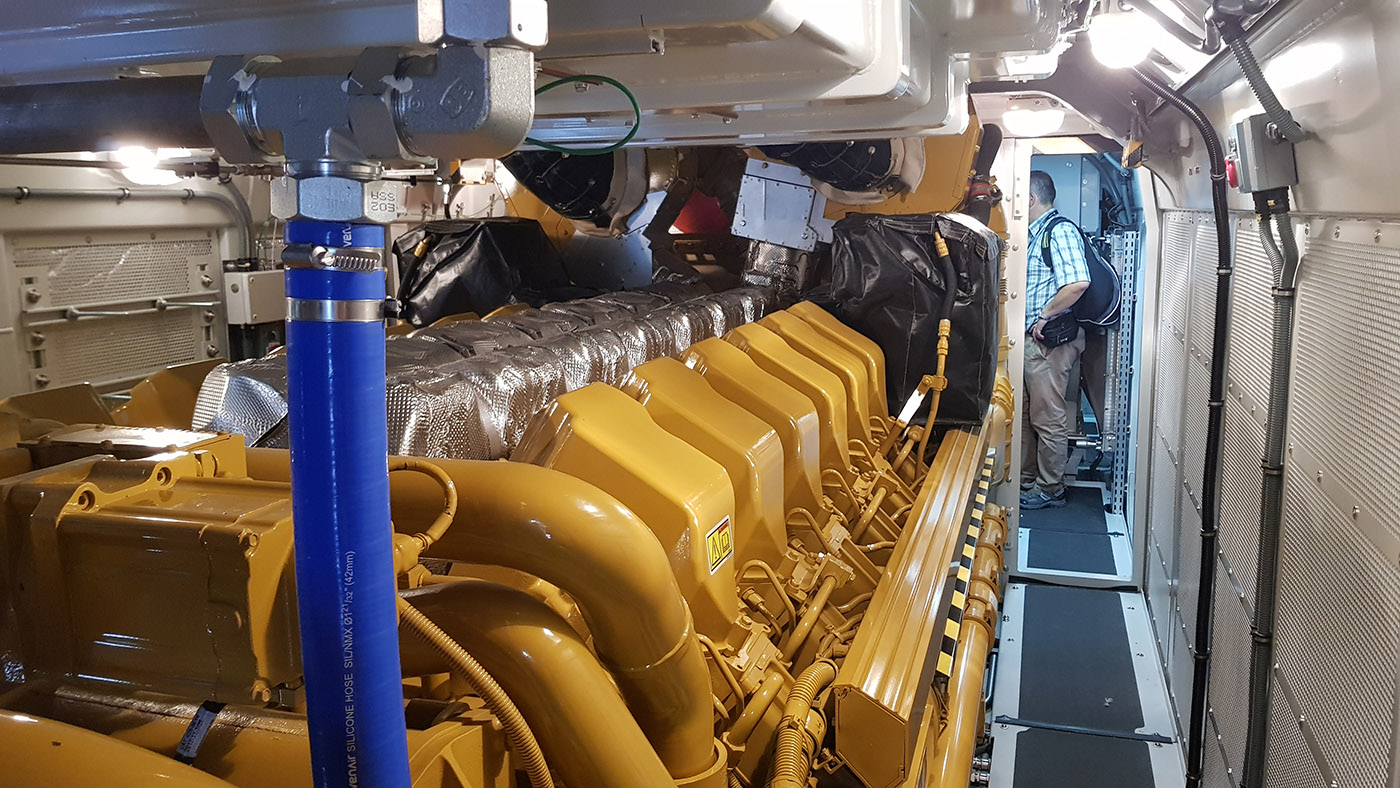
Showed and equipment for maintenance of railway tracks.

And even for the transport of goods! The paradox is that in Europe, appliances look clean, not only being “new and just from the conveyor”, but throughout its service life. That's because it is used and competently served by high-class professionals.
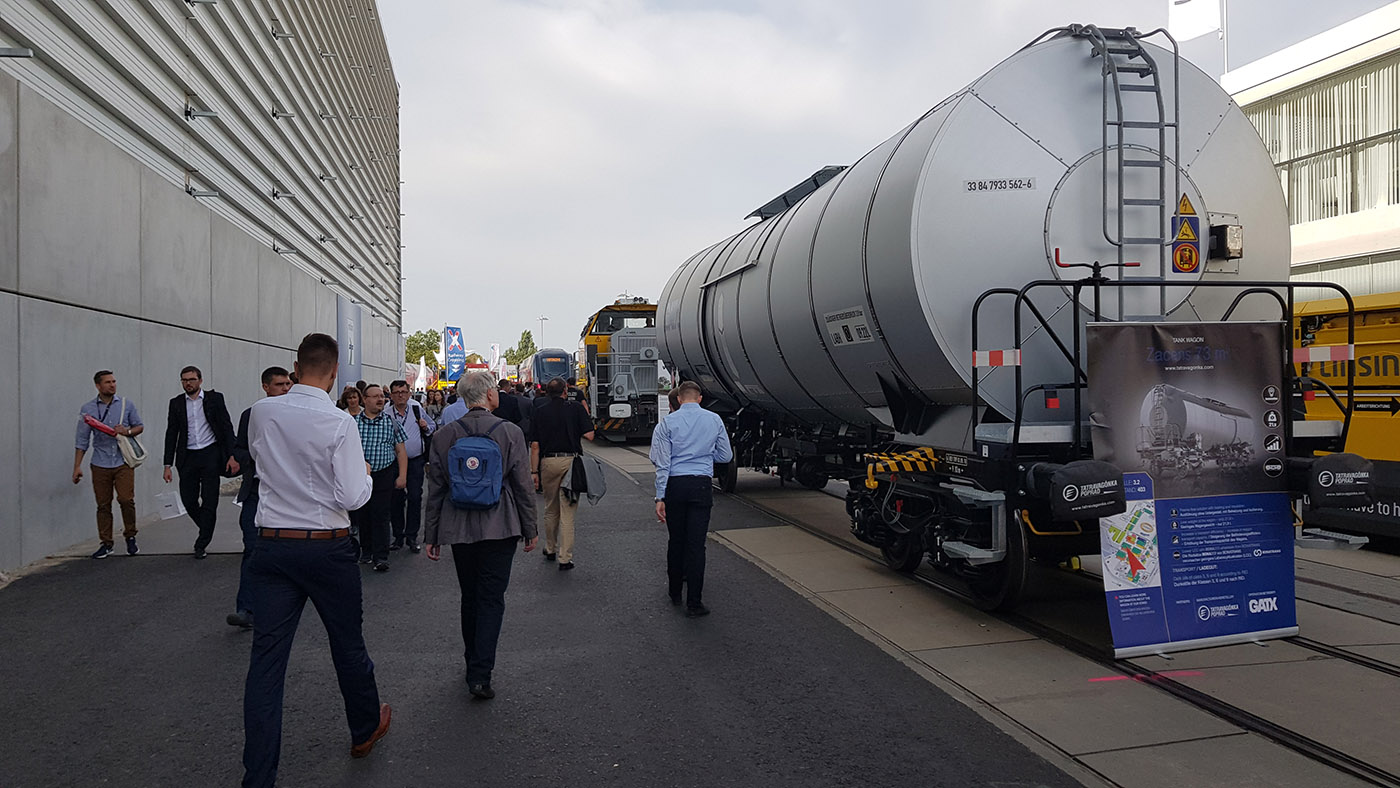
Returning to the topic of accessibility of transport by people with limited mobility, it is necessary to note the fact that in world production all transport is immediately designed correctly. In Europe, they systematically get rid of old transport units that do not meet modern standards.
Fortunately, in Western Europe everything is much better, people started thinking about people with limited mobility tens of years earlier, and outdated equipment was disposed of in time for disposal, replacing them with high standards of comfort and safety.
Let's continue to learn German and other railway transport!
In addition to people with limited mobility, much attention is paid to cyclists, because in Europe a bicycle is becoming the main mode of transport for short distances. It is logical that passengers will be happy to take it with them on trips and long distances in order to continue the route.
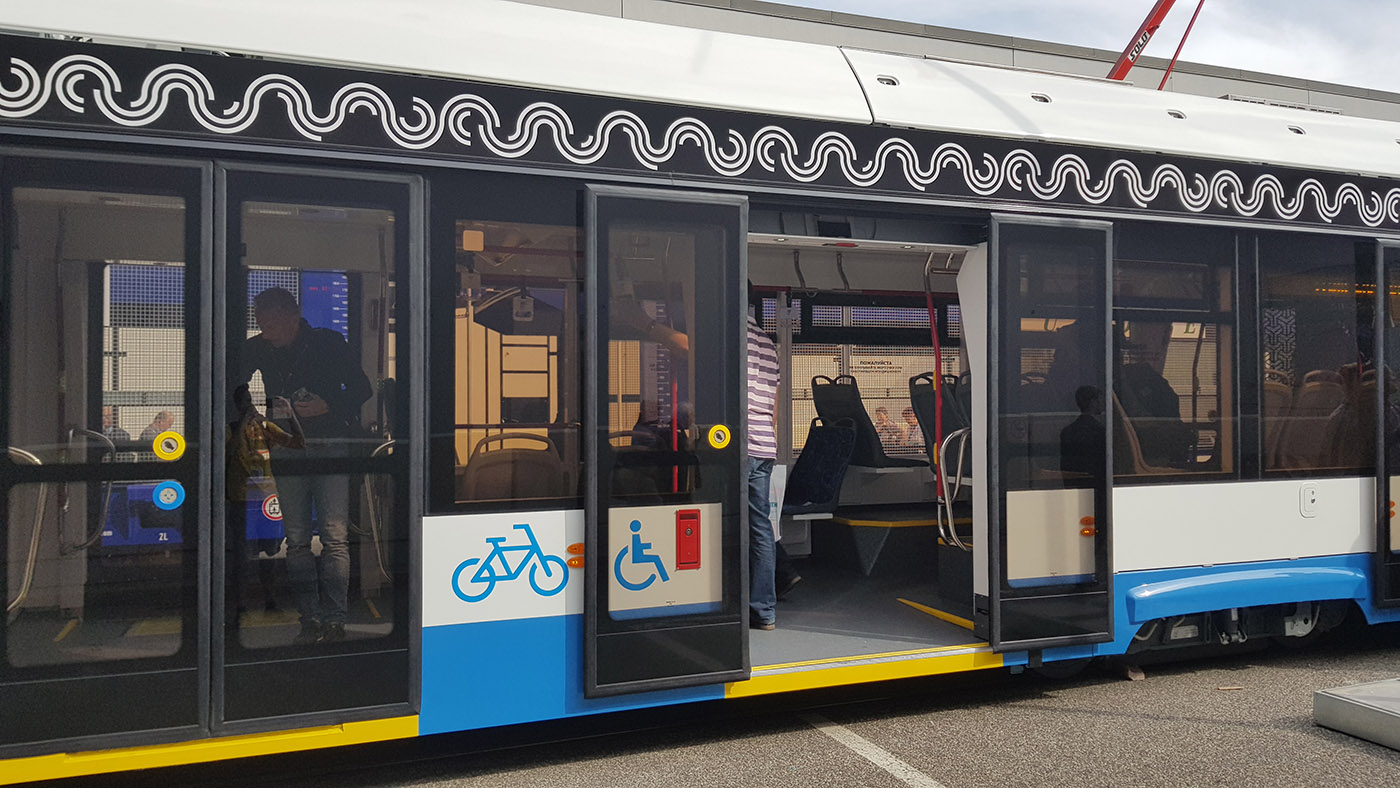
Trains are immediately designed so that they can comfortably accommodate with a bicycle. Bicycles can be placed, including vertically, in specially provided sections.

Sockets for e-bike are provided. I rode the e-bike to the station, got on the train, put the e-bike to charge, and after the end of the route you again have the opportunity to continue on your way. Conveniently!
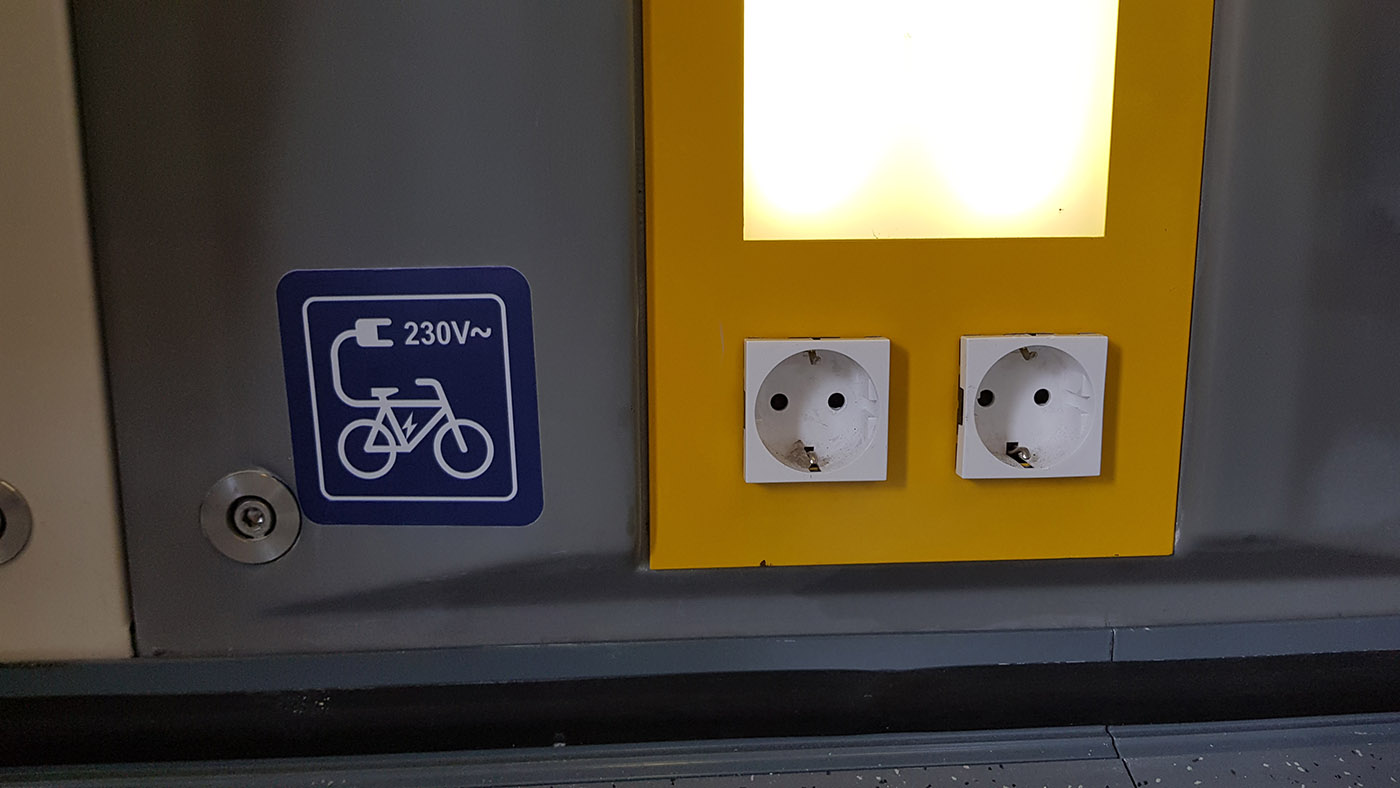
The last years in the transport began to appear sockets for charging devices. Unfortunately, it came with a huge delay - smartphones and other devices are already ten years old as everyone has, and sockets in vehicles are still a luxury. They are not everywhere, often located very uncomfortable (under the ceiling, for example). This shows an absolutely devil-may-care attitude towards people: in Europe this also occurs, but at times less than in Russia.
Fortunately, in the latest models of transport at the exhibition almost everything is done as it should. Correctly do not one outlet for several seats, and on the outlet for each seat, as in the photo. That is how it should be everywhere. Note: both USB and regular sockets are provided. Everything is thought out.
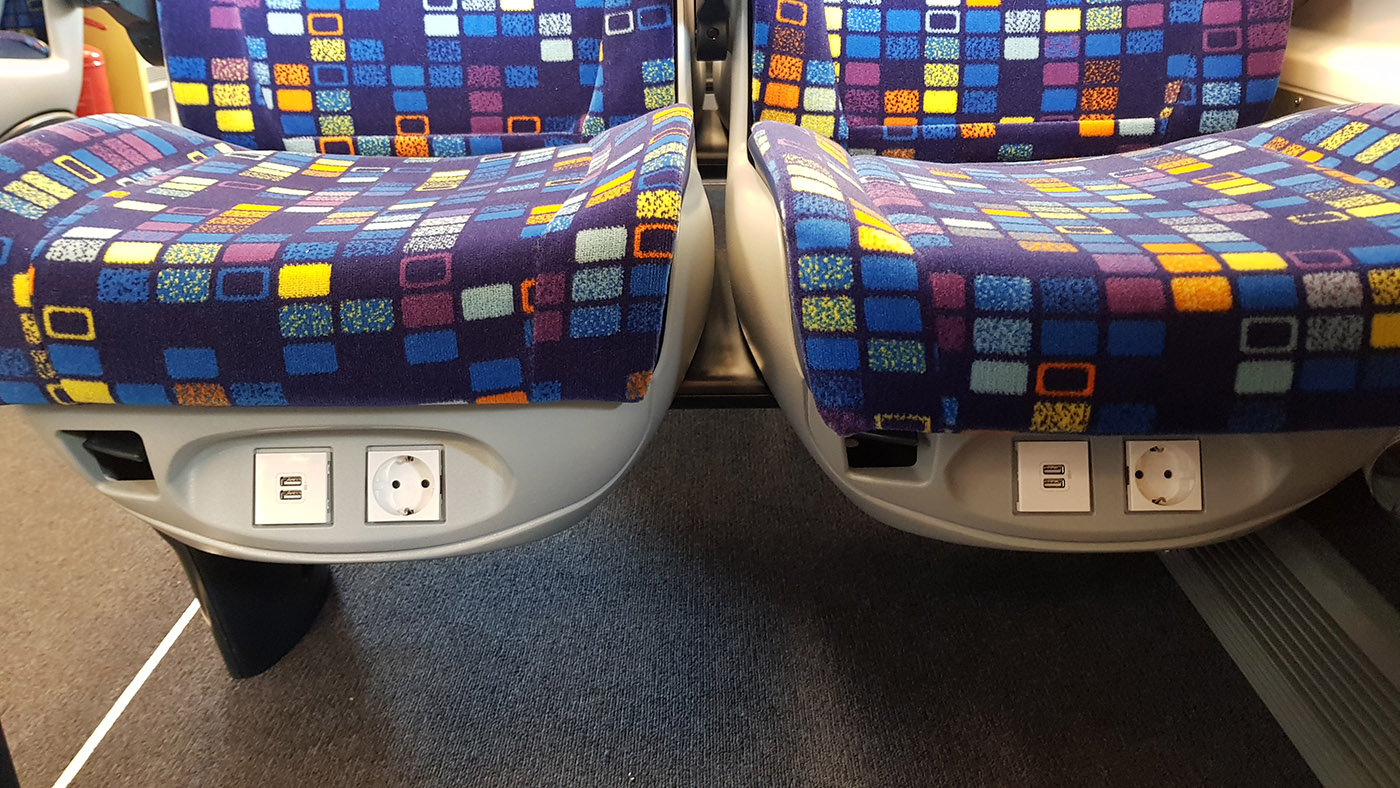
Even the train has a separate collection of garbage. Just because in European civilization it could not be otherwise by definition. The opposite situation is wildness, approximately as if there were no electricity in the metro and candles were burning everywhere.
Recycling is a very important thing for the inhabitants of the countries of the first world, they care about the environment, they do not want to live in cities with a poisoned environment. They care what the world will be for them and future generations. Sometimes it comes to quite radical points of view. For example, my girlfriend from Switzerland is strongly opposed to airplanes and travels by bus instead of them (even if it is several times longer and sometimes more expensive). Just because airplanes cause irreparable harm to the environment.
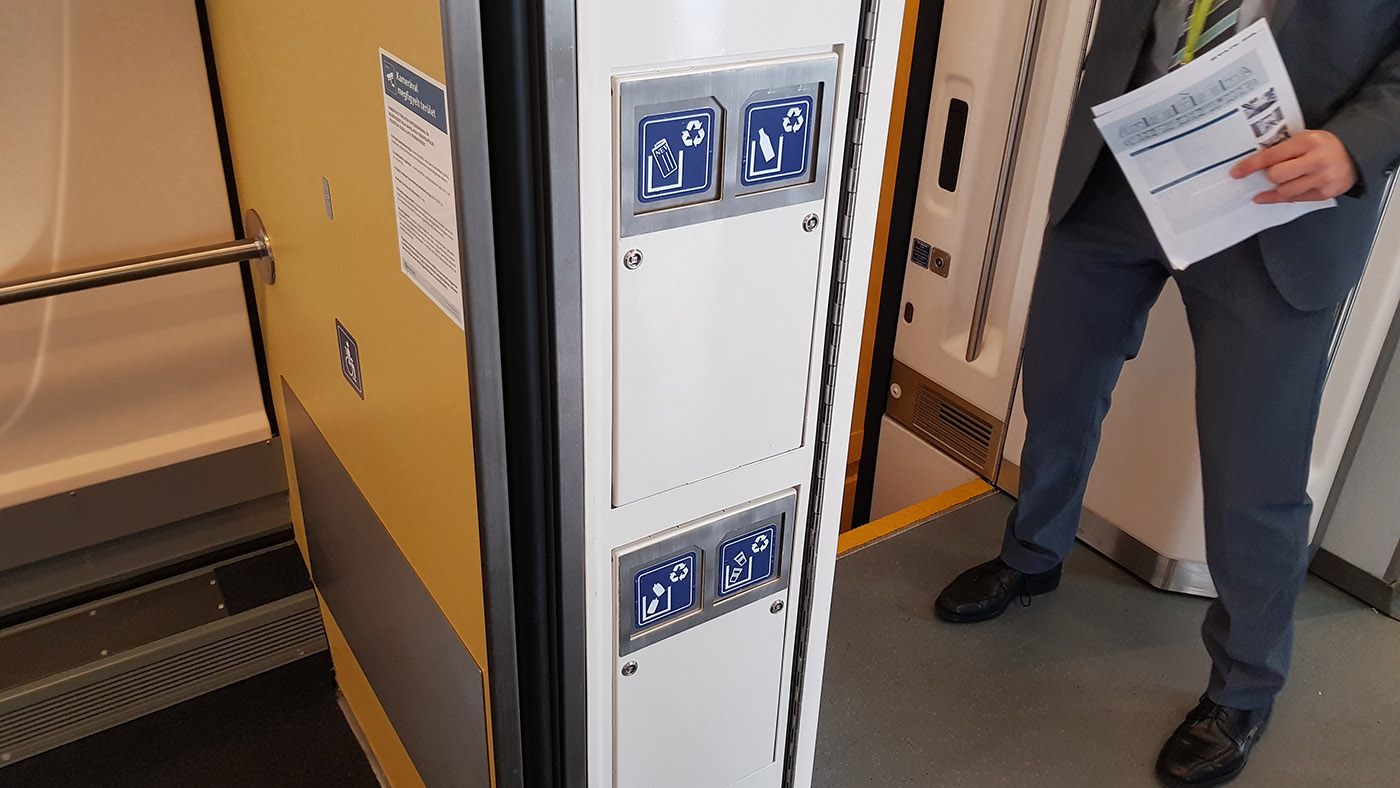
Manufacturers have gone even further - chair numbers are now necessarily duplicated in Braille. There are also other technical elements intended for the navigation of the visually impaired. The idea is that everyone can fully use public transport and easily find their own seat. Nobody will need anybody to ask for help humiliatingly.
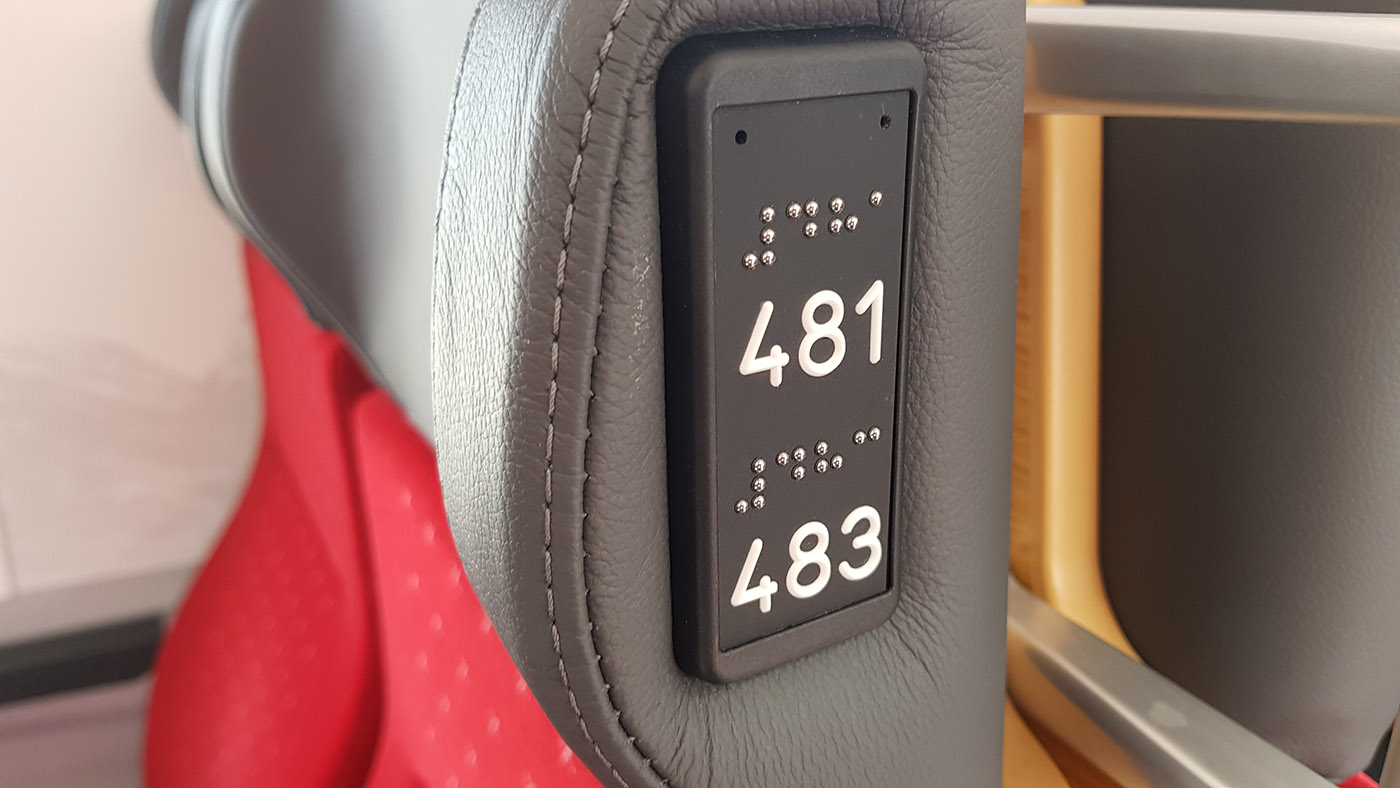
The trains are both stylish and comfortable. And comfortable all at once.

An interesting idea with a charging port. But this is better to do on the seats, rather than on the rail. In addition, in the foreseeable future, you will need to redo everything under USB Type-C. Of course, in transport no one will alter it.
So the universal socket, in which the passenger himself will install the adapter, remains the optimal solution, along with USB. As an idea, it is a replaceable unit that can be easily and painlessly changed every few years, upgrading it. But before that, for some reason, they did not guess.
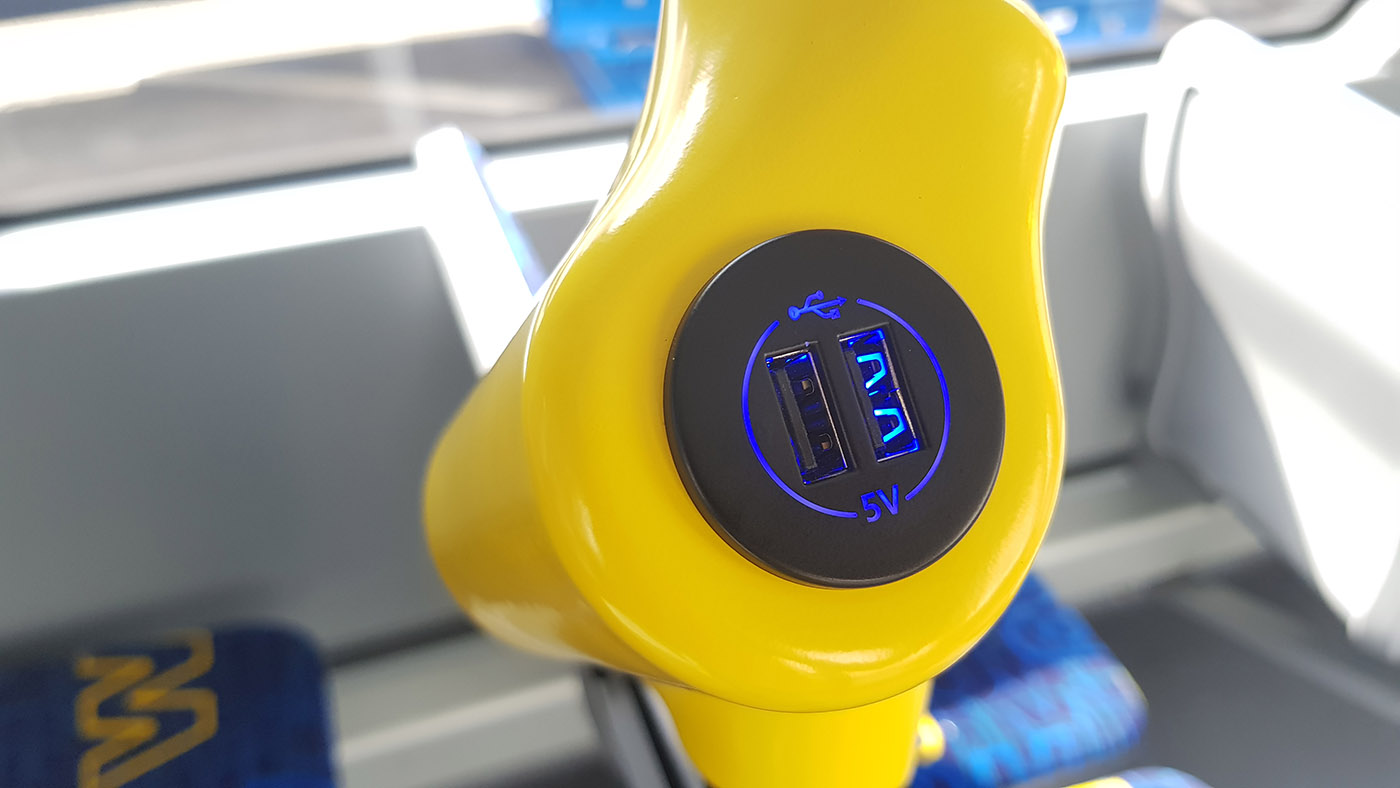
The new S-Bahn train for Berlin also liked from all sides.
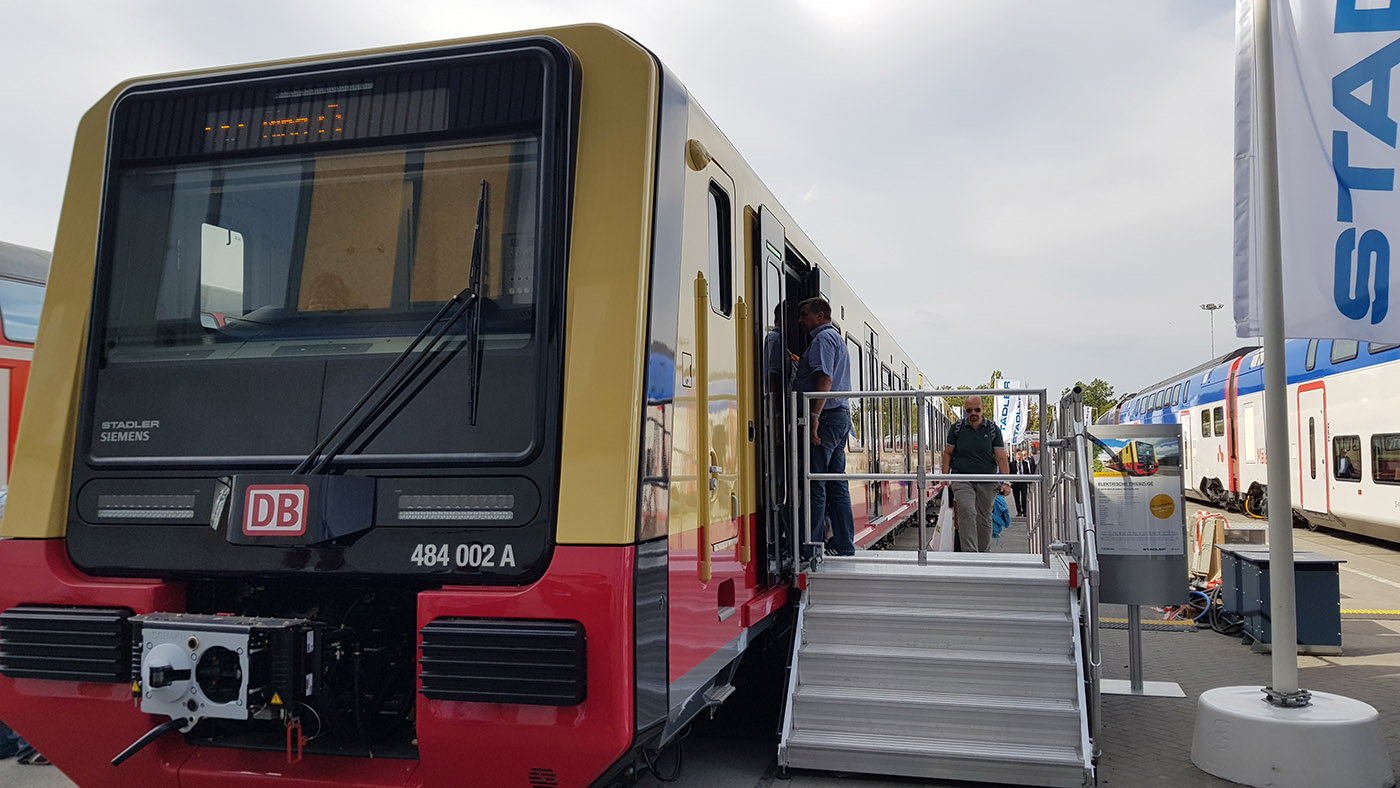
Here and easy navigation with the update schedule live, which helps to navigate when transport is late, which in Berlin and in general in Germany occur on a regular basis, every day many times (paradox).
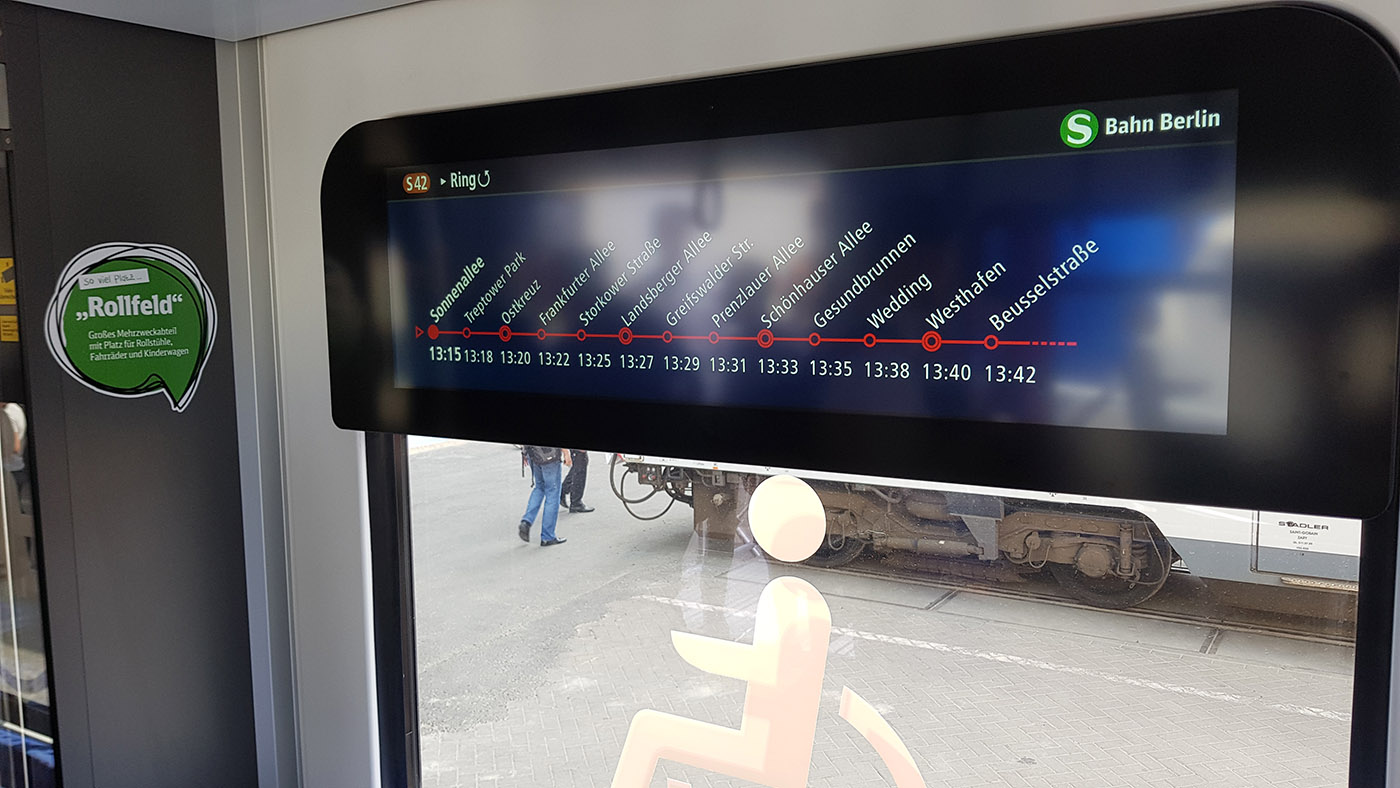
Almost the main feature of the new train was the presence of an air conditioner, although in the rest of the world this has long been standard. This is another paradox - in contrast to the whole world, in Germany air conditioners are considered wild luxury and they are almost nowhere to be found. In summer, your day looks like this: you suffered all night in a hot room and with noise from an open window, in the morning you go to work in the heat and stuffiness, you sit 8 hours in a hot, stuffy office, and then everything is new, while in Russia everyone enjoys the coolness. I could not find an explanation for this strange fact.
And, of course, again convenience for people with limited mobility. Is it necessary to focus on this topic every time? Having all the amenities for passengers with limited mobility is just as common as the presence of light in a car.
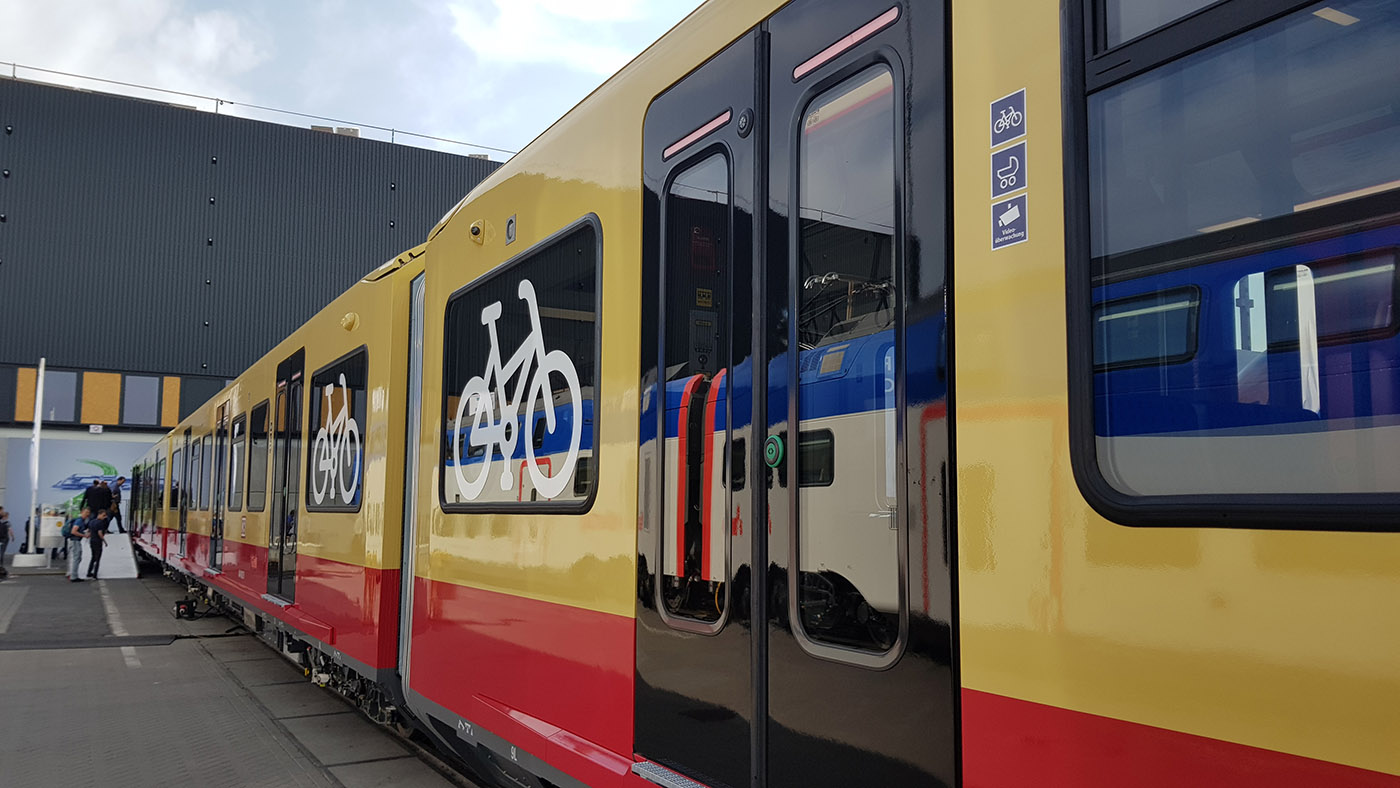
Let's move to the pavilions. Huge expo, hundreds of manufacturers, everything is done at the highest level. I can not believe that just a couple of weeks ago there was a completely different exhibition here, IFA 2018.
Everything was presented here. And even more. Starting from the engineering elements of cars and trains.
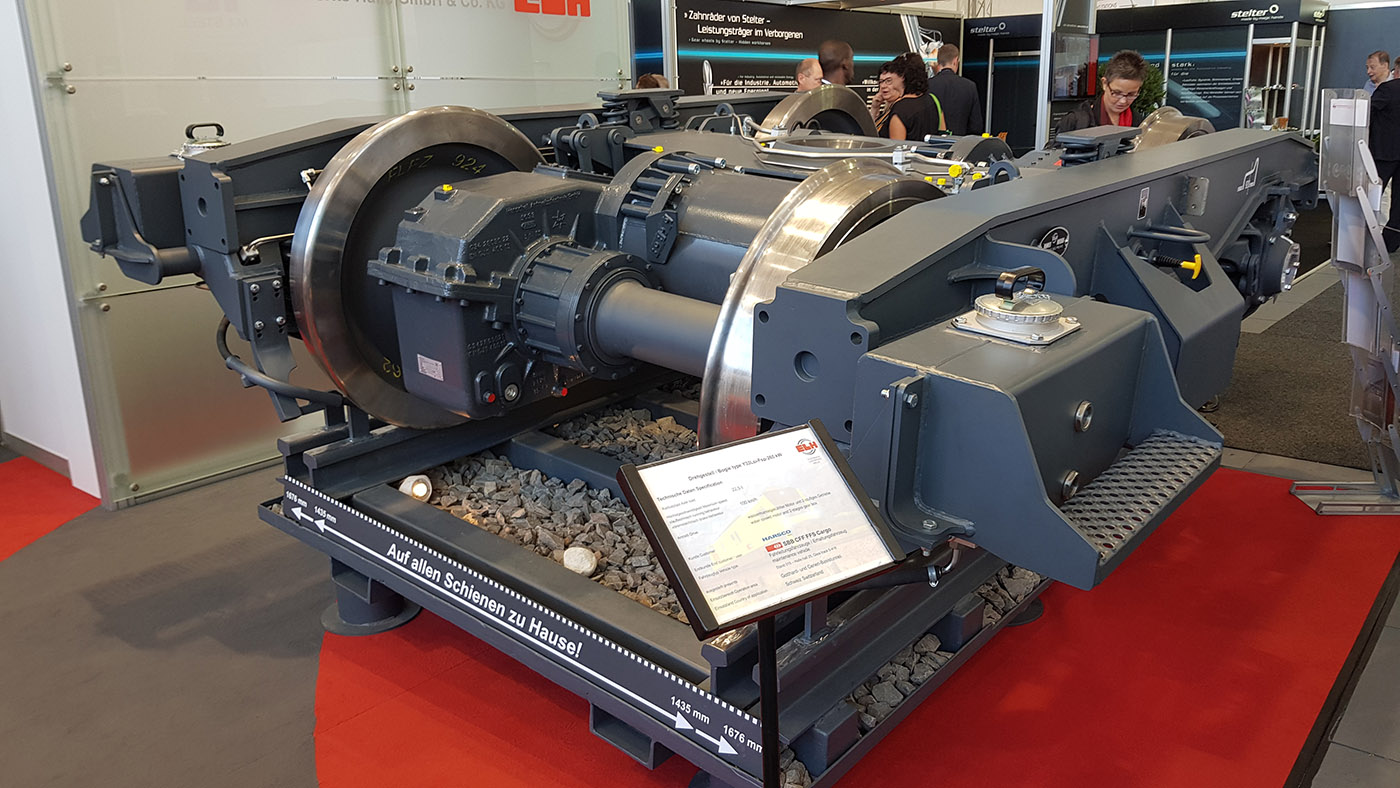
And ending with equipment for stations, traffic lights and semaphores.
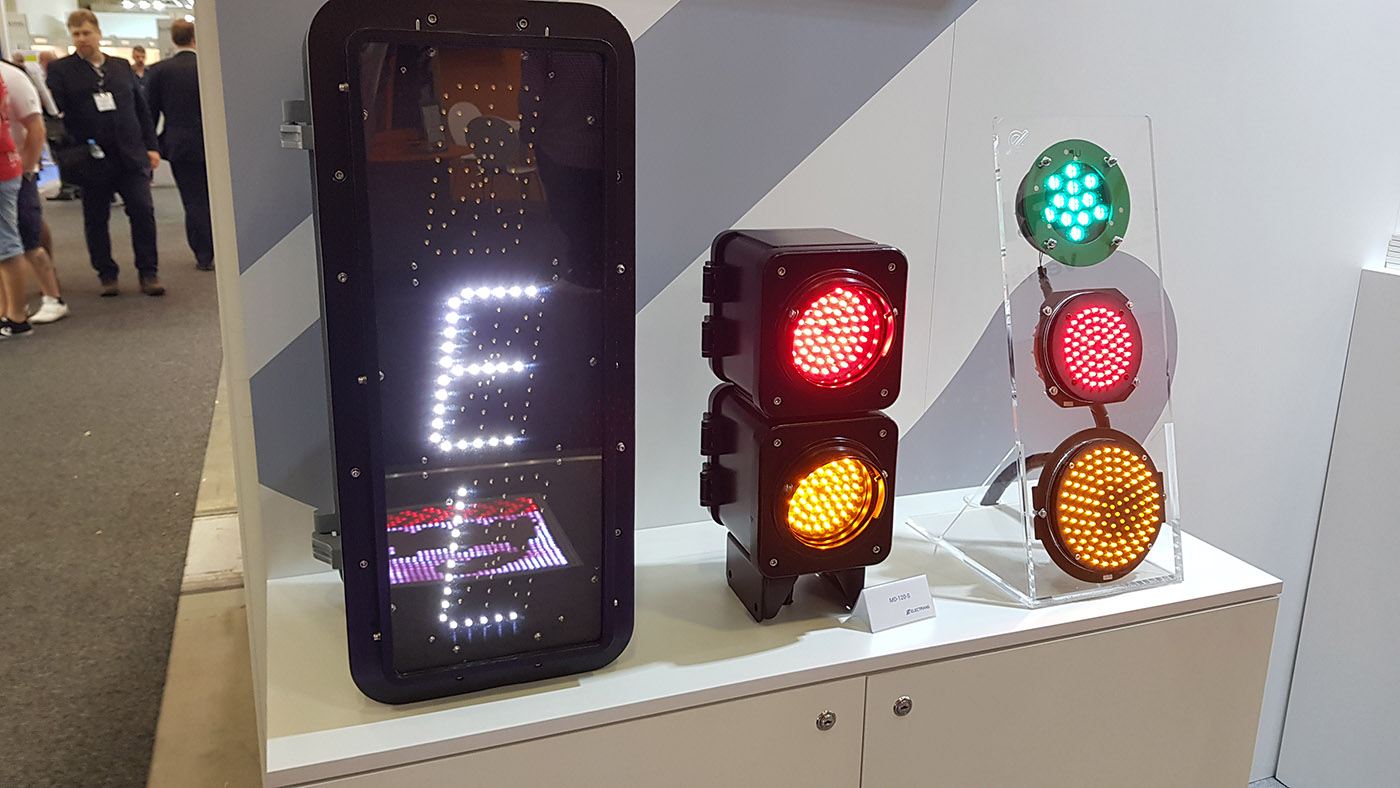
There were some non-railway-related stands, but very interesting ones. For example, dedicated e-bikes. I believe that it is for them that the future of personal transport in the cities. In Berlin, several companies have already organized e-bike sharing, and city residents are happy to purchase them. And in Amsterdam, the bicycle capital of the world, almost everyone has them.
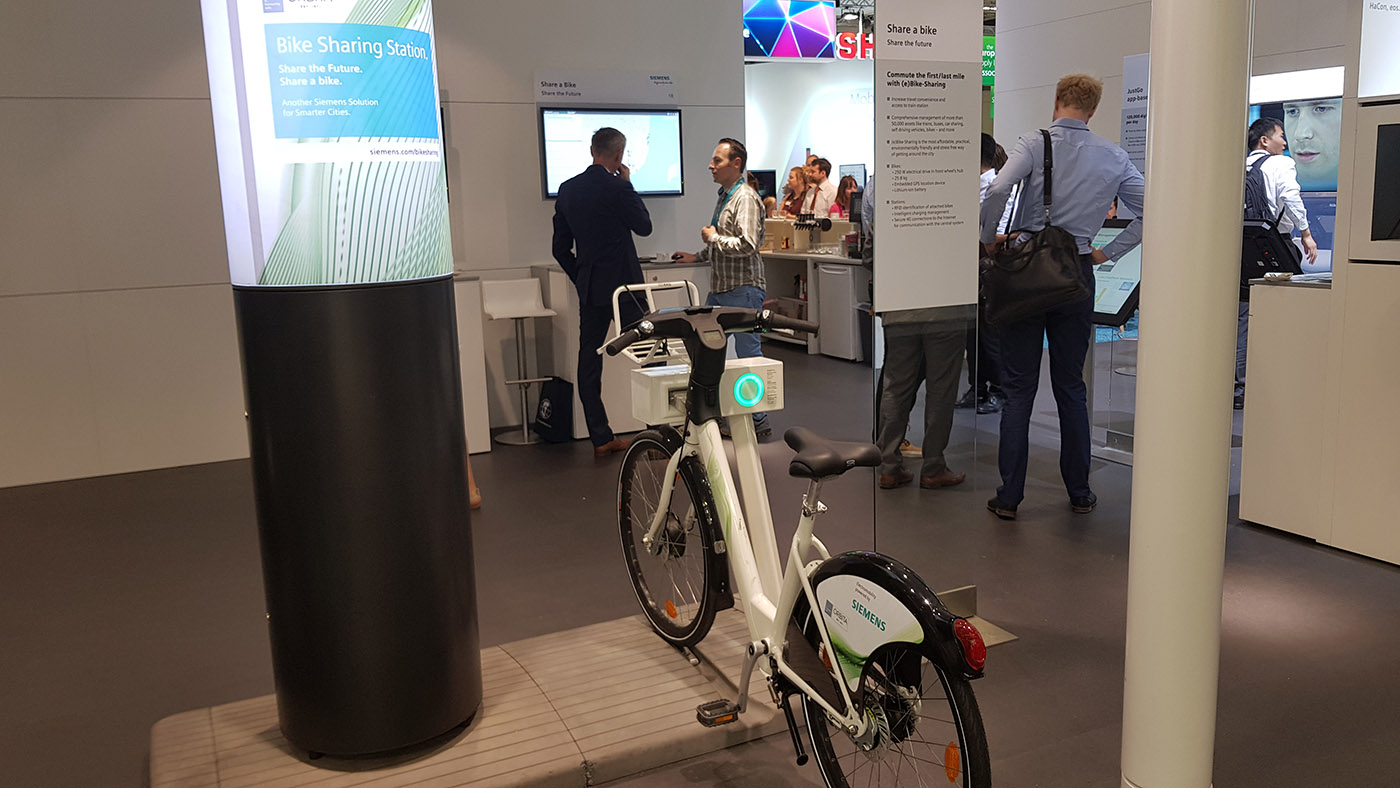
Compact and eco-friendly electric cars are great too! Saw such in large numbers in Norway.
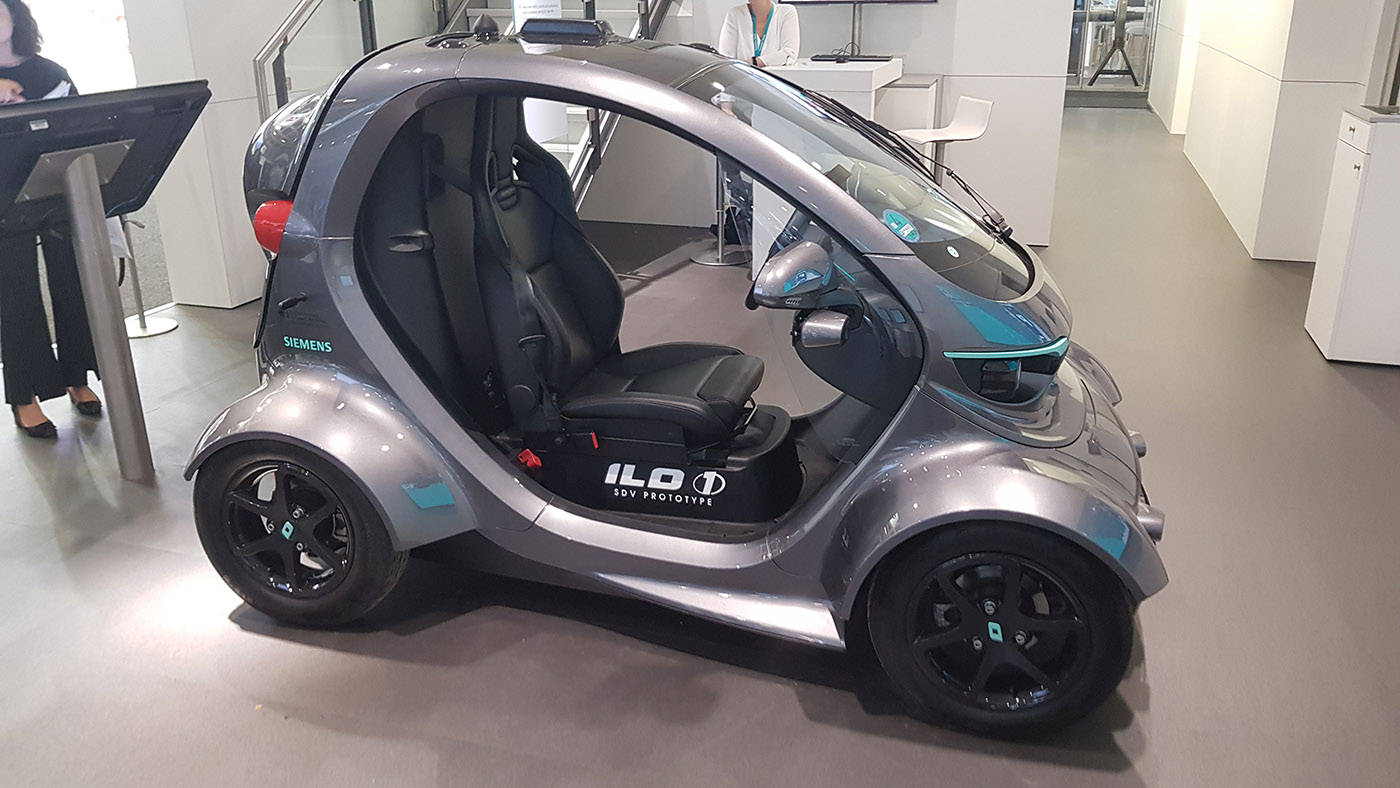
In the pavilions at the exhibition, modeling and testing tools were shown that greatly help in creating projects for trains, stations, and in general ensuring the entire transport infrastructure. I tried VR on myself - an amazing experience, as if you were on a real train.
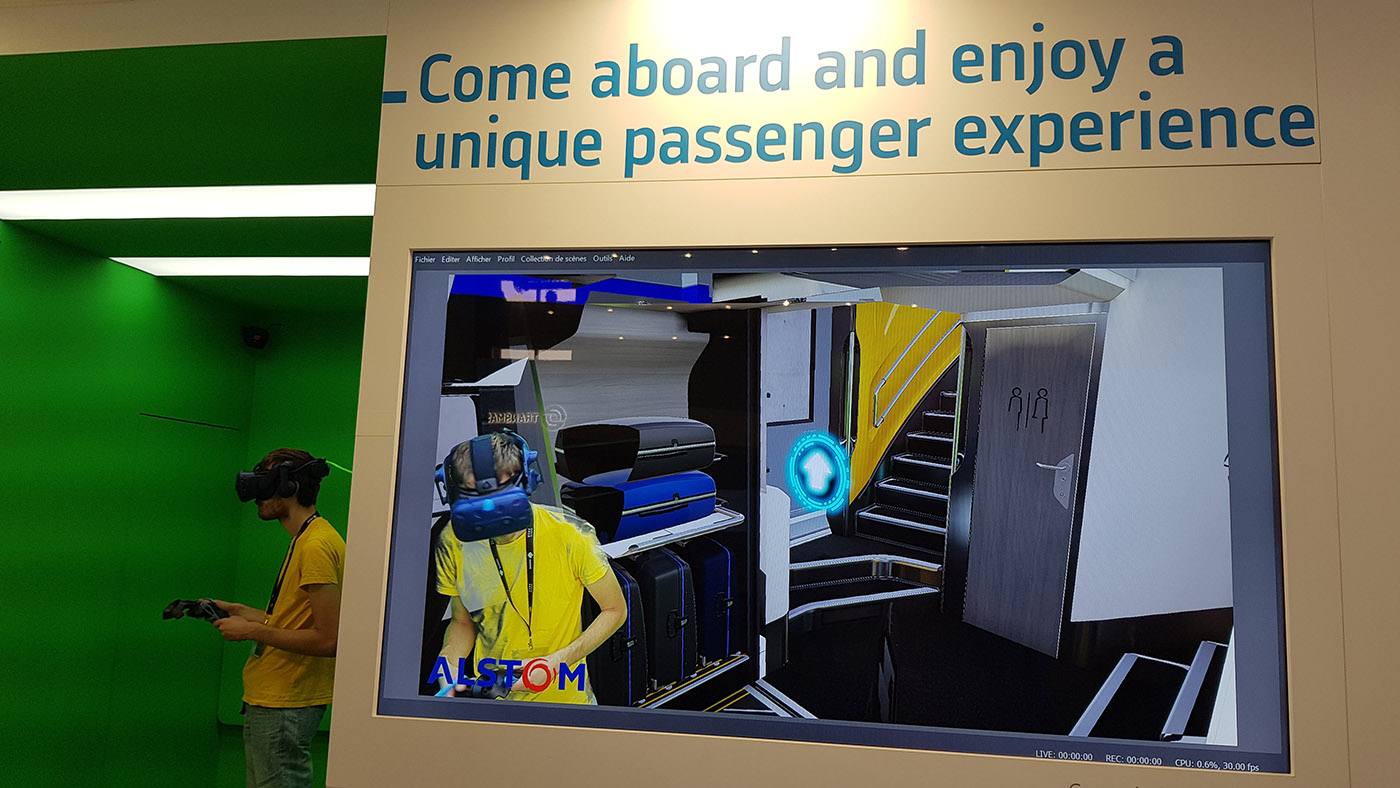
Why is all this necessary? Very simple! First, drawings and three-dimensional models of cars are created on the basis of technical requirements, but this does not end the work, because behind the technical part lies the analysis of user experience. Therefore, manufacturers necessarily conduct testing on various focus groups, analyzing whether people like to “be” in the developed car. And already on the basis of this long-term analytics, trains are being comprehensively refined, including with the participation of designers, specialists in use-case and a multitude of related sciences.
Simulation is used to create projects for stations of trains, trains, subways, even buses and trams. This is the relevant approach, it is an integral part of modern urban planning. I managed to “touch” one of such information systems with my own hands.
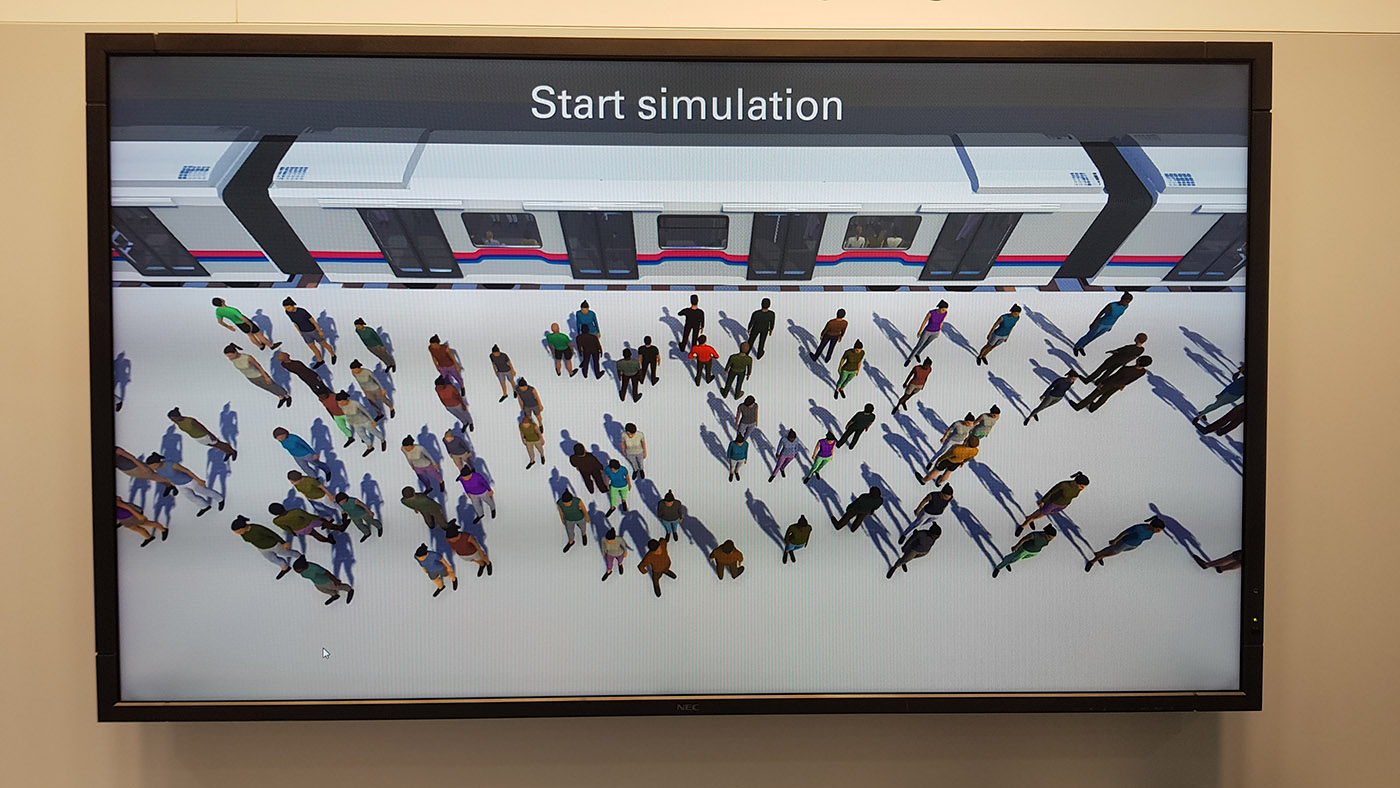
You can set the number of people in the train, passenger traffic, many statistical parameters. In order to properly design the infrastructure, probability theory, mathematical statistics, algorithms of mathematical modeling come to the rescue.
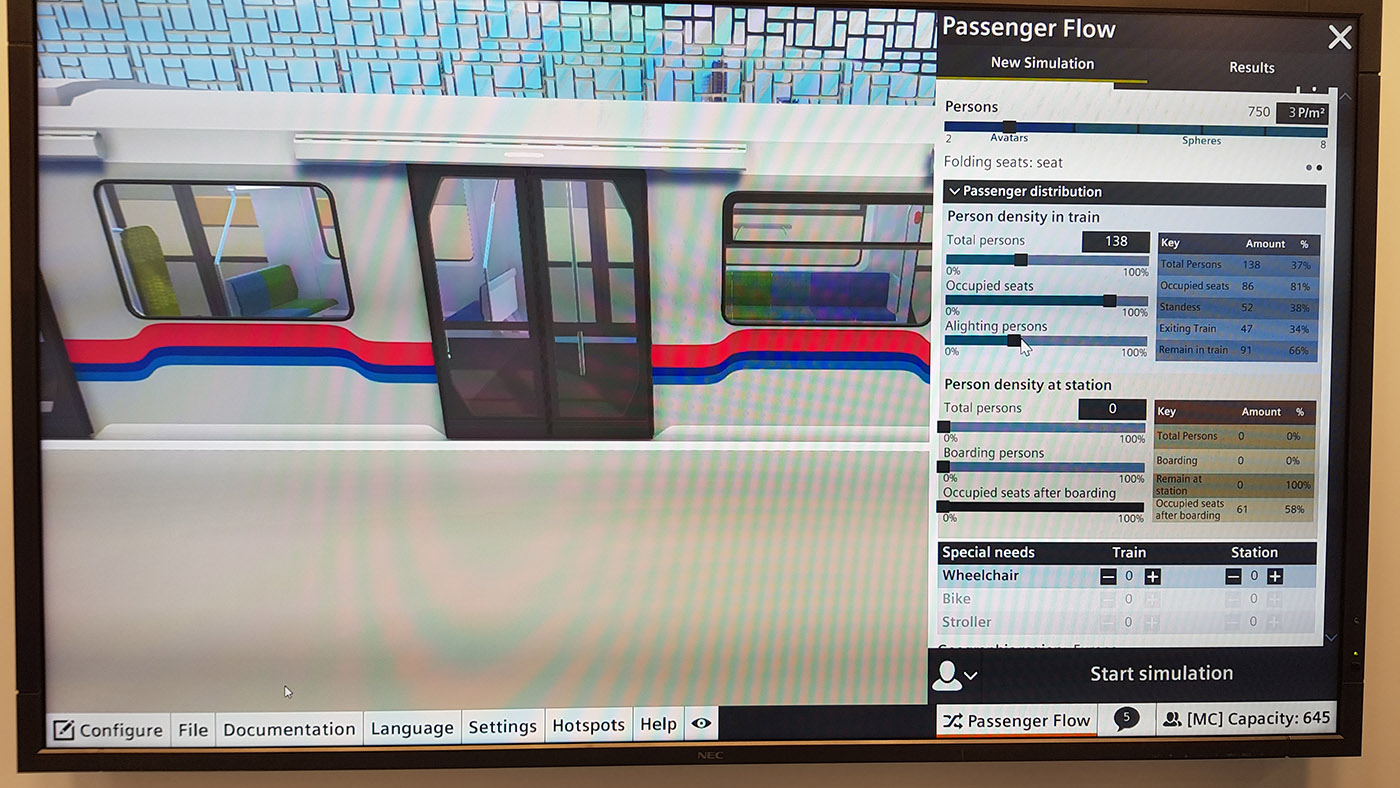
Achievements of European engineers and equipment manufacturing companies cause deep respect, because everything they do is meant for the comfortable and convenient daily life of ordinary Europeans. Up to attention to the smallest "little things."
The fact that the authorities of European cities are actively moving towards the introduction of modern public transport equipment and station equipment, taking into account the modern engineering and scientific approach, is also encouraging. Probably, it is not necessary to say that in Russia sometimes they have not even heard of such a thing. As a result, everything is done non-optimally, incorrectly, inefficiently and at a low level.
Attracted the attention of the Belarusian project of high-speed train. So far, everything is on the promo and demonstration prototype level, but what a great potential!
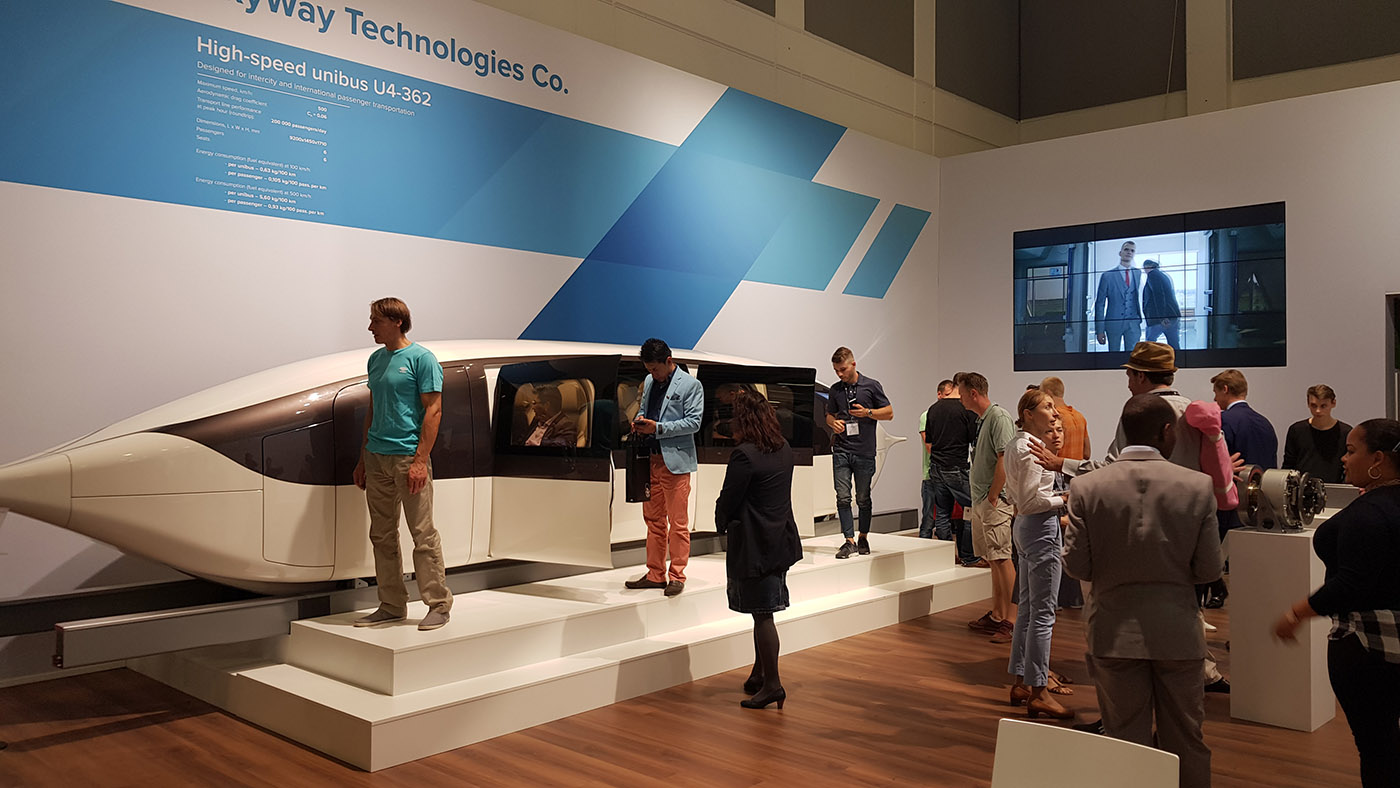
I managed to talk with a person who participates in the development of this project, he told a lot of interesting things. The introduction of such trains in Europe and in the world (even in Belarus) is already literally tomorrow. Technologies are worked out, trains are designed and tested, the problem is only in the shortage of investors.
Belarusian high-speed train is immediately designed with a European approach to quality and comfort. He reminded the capsule with something, but it is in such a capsule that it will be possible to overcome long distances in the shortest possible time.

The luggage compartment is roomy. You can take your carry-on baggage with you to the cabin, and leave large suitcases in your luggage.

Inside the scoreboard with all the information about the proposed route, navigation data. How did I get to Minsk? Are they going to send me to Moscow now? Oh no, just not to Moscow ...

Better in Tokyo! Japanese companies are also actively promoting their products in the Innotrans. Japan is generally a unique country that is distinguished by its safety and punctuality. In Germany, a delay of 3-10 minutes is generally not considered late and always happens every day. Cancel trains, mess - the absolute norm. Unlike the USA, no one runs to court, no one is outraged - another feature that I really don't like in Germany. In Japan, everything is exactly in seconds. But that's another story.

The exhibition had a lot of stuff. For example, modern turnstiles and other equipment for stations, which is not so interesting and impressive.
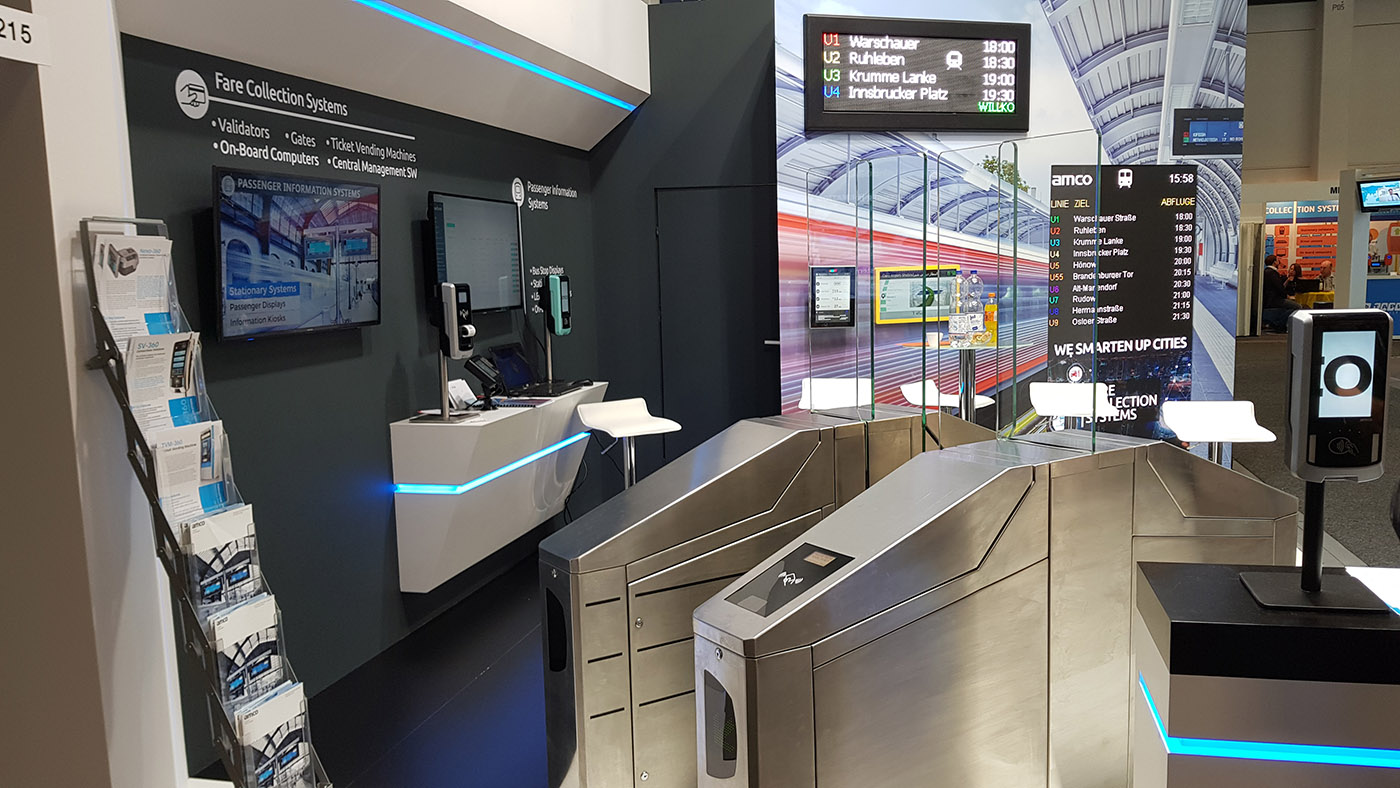
It’s a paradox, but Russians, Ukrainians, Belarusians won’t be surprised with terminals for paying with cards, also with PayPass support. But for Germany, where most people still pay in cash, with all the conservativeness in introducing modern technologies, this is just wow. Fortunately, not all of Europe is like this, in Sweden, for example, absolutely the entire economy is transferred to cards and the turnover of cash is reduced to an absolute minimum. So it should be everywhere - pieces of paper and coins against the backdrop of amazing modern technology look very, very strange.
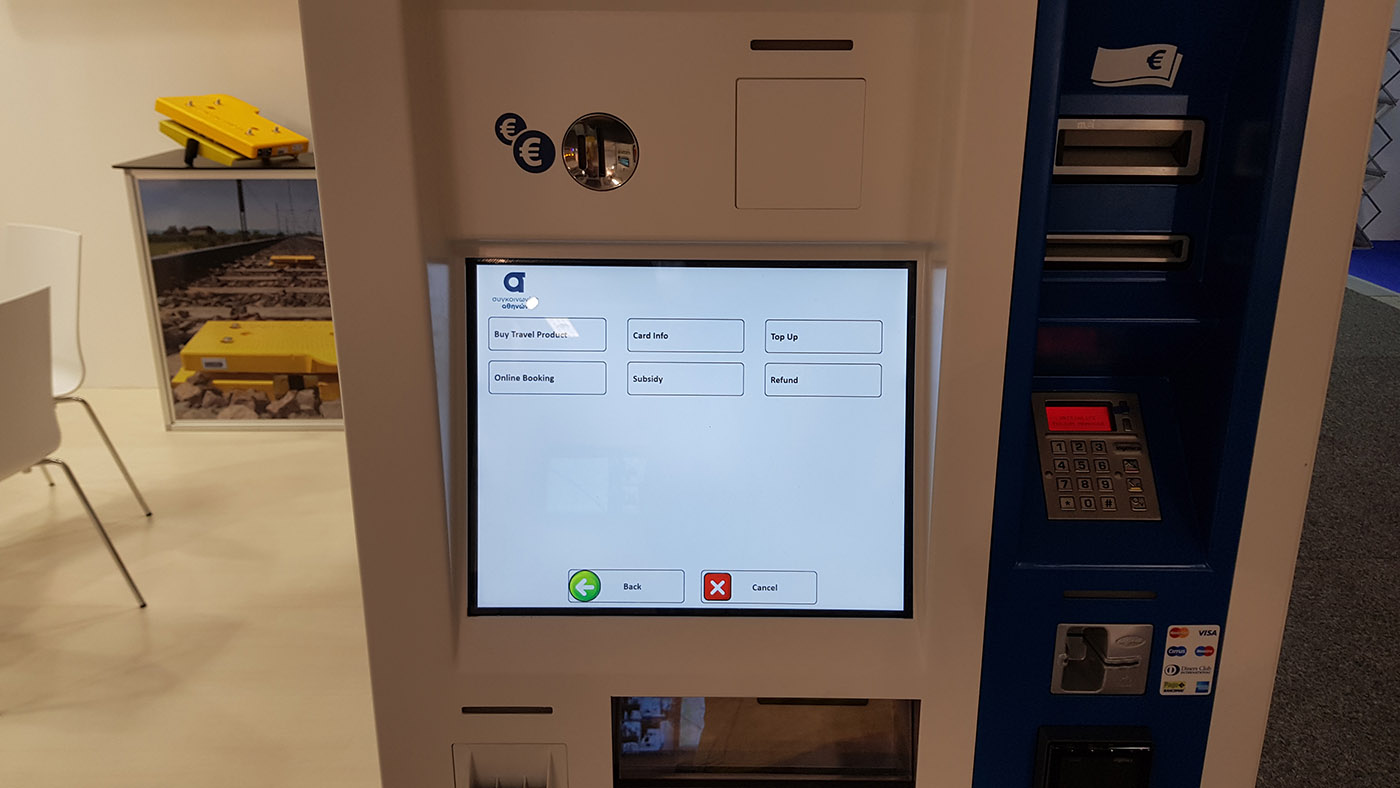
There were a lot of terminals and different. I really want to see these in Germany as quickly as possible. For every taste and color. But with the obligatory functionality in the form of PayPass.
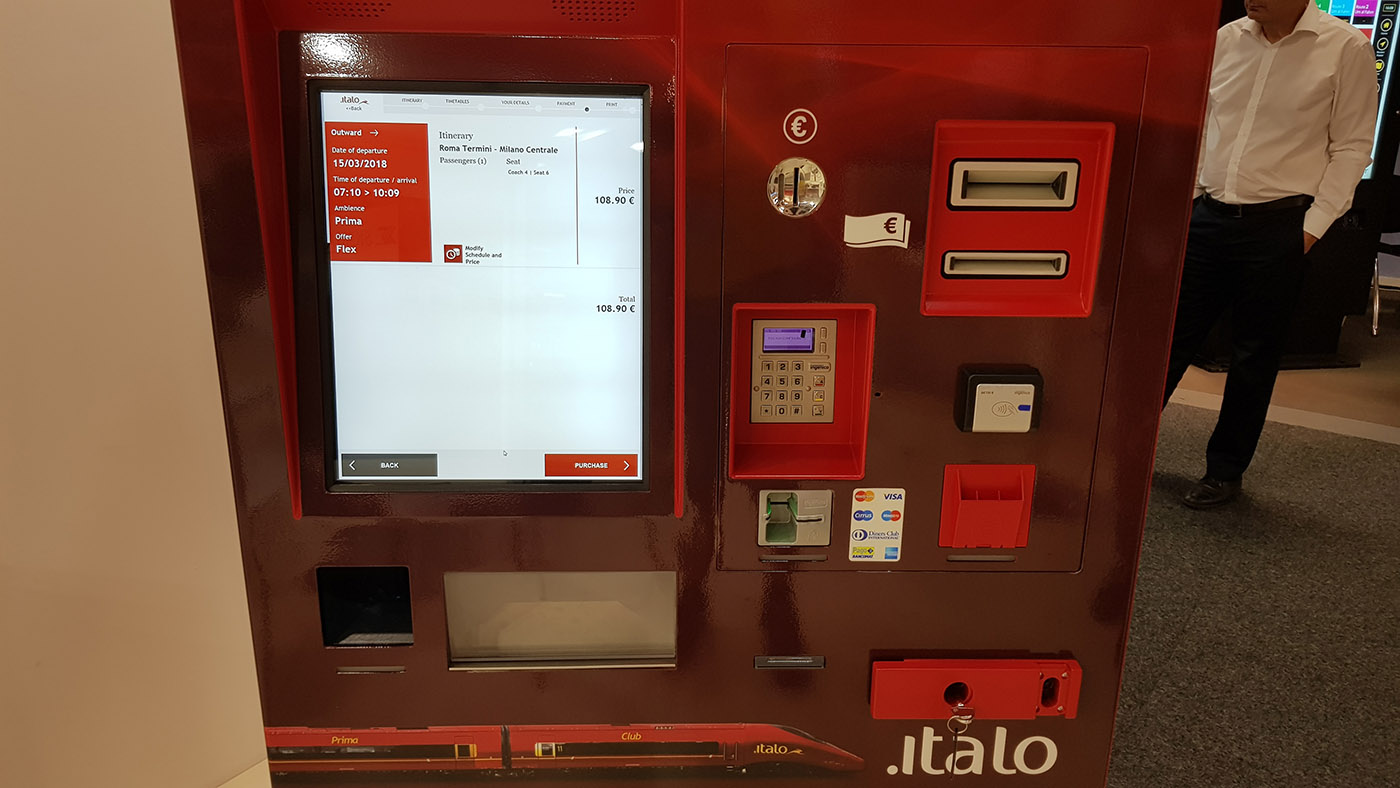
For you, this is the usual subjects in life? For many residents of Berlin is a miracle of technology.
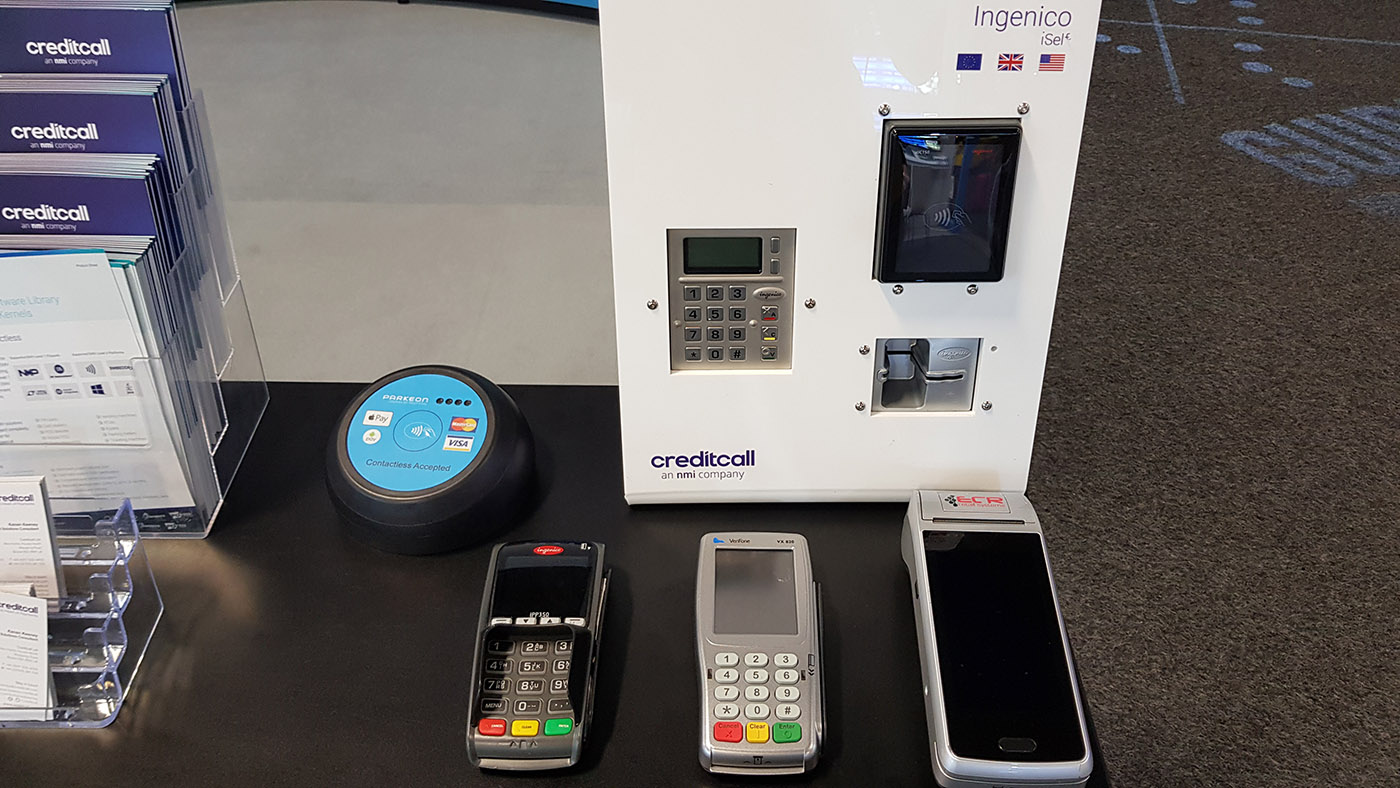
True, after the cash registers and ticket machines in some time gone into the past - now you can buy a ticket in the app on your smartphone.
The exhibition even showed modern cool furniture for stations and public spaces. It's great to be here and feel not only in the innovative present, but in the even more developed tomorrow future. Beautiful, stylish, comfortable, functional, effective.
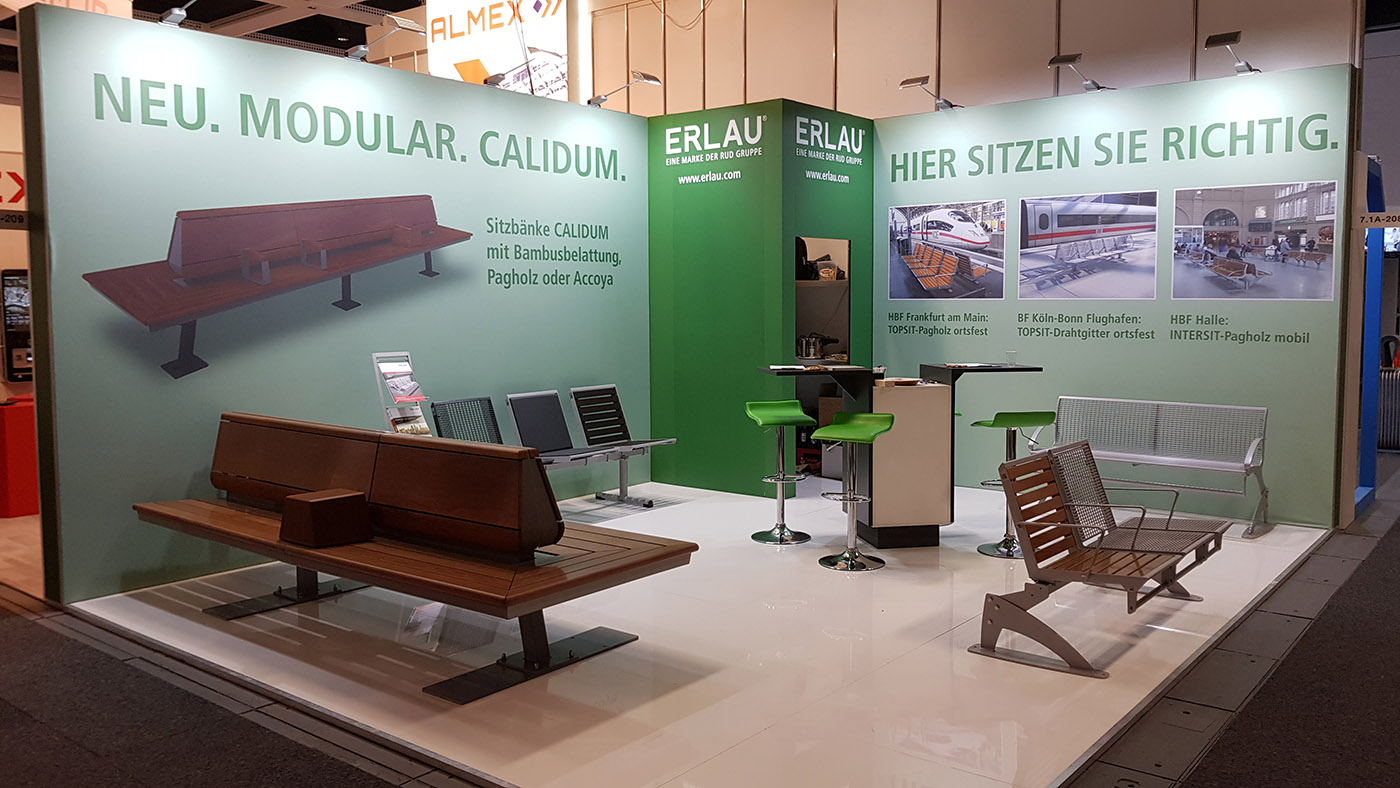
Toilet equipment for stations is also modern and very stylish. By the way, having run all day around the exhibition, I actually wanted to go to the toilet and was glad to get to this stand. Joy was replaced by disappointment, because I had almost taken advantage of the toilet, as a representative of the company, waving with his hands, came running and said that it was impossible.

Reached the second toilet stand, but there is the same attack: you can not. But what is that, how to go to the toilet? He felt like Borat, who had just found himself in the civilized world, but still refused to use the package.

(I hope you understand that I'm kidding :))
Russian products were also represented at the exhibition.This of course greatly pleases, especially the fact of competition with European, Chinese and other global manufacturers. The more competition - the more striving to create the most convenient and comfortable product for people.

Only the fact that in the branding of Russian products they like to use exclusive names in Russian is striking in the eyes. Well, at least not written in Cyrillic. Compare yourself: the trains of other manufacturers at the exhibition are called entirely called Flexity, InterCity, and Russian - Lastochka, Vityaz, Chaika. So I want to say: WTF? And this thought arises from me, a person who knows Russian. And ordinary Europeans appear just misunderstanding and lack of interest. While the English language is being introduced in the world with might and main, its introduction in Russia is blocked in every possible way.
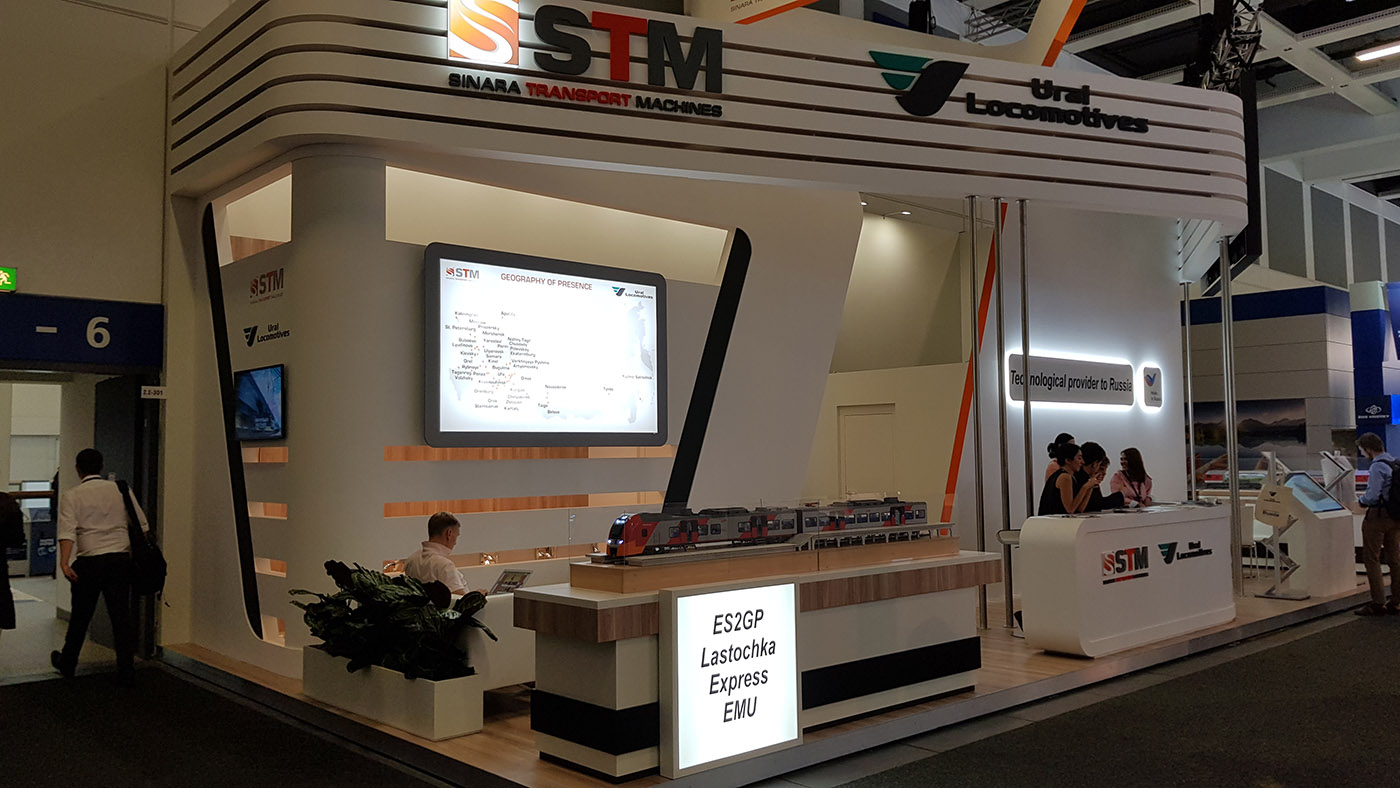
I liked the map at the stand of Ural Locomotives. Some residents of Russia will lose one region on this map. In the meantime, serious business understands everything correctly.
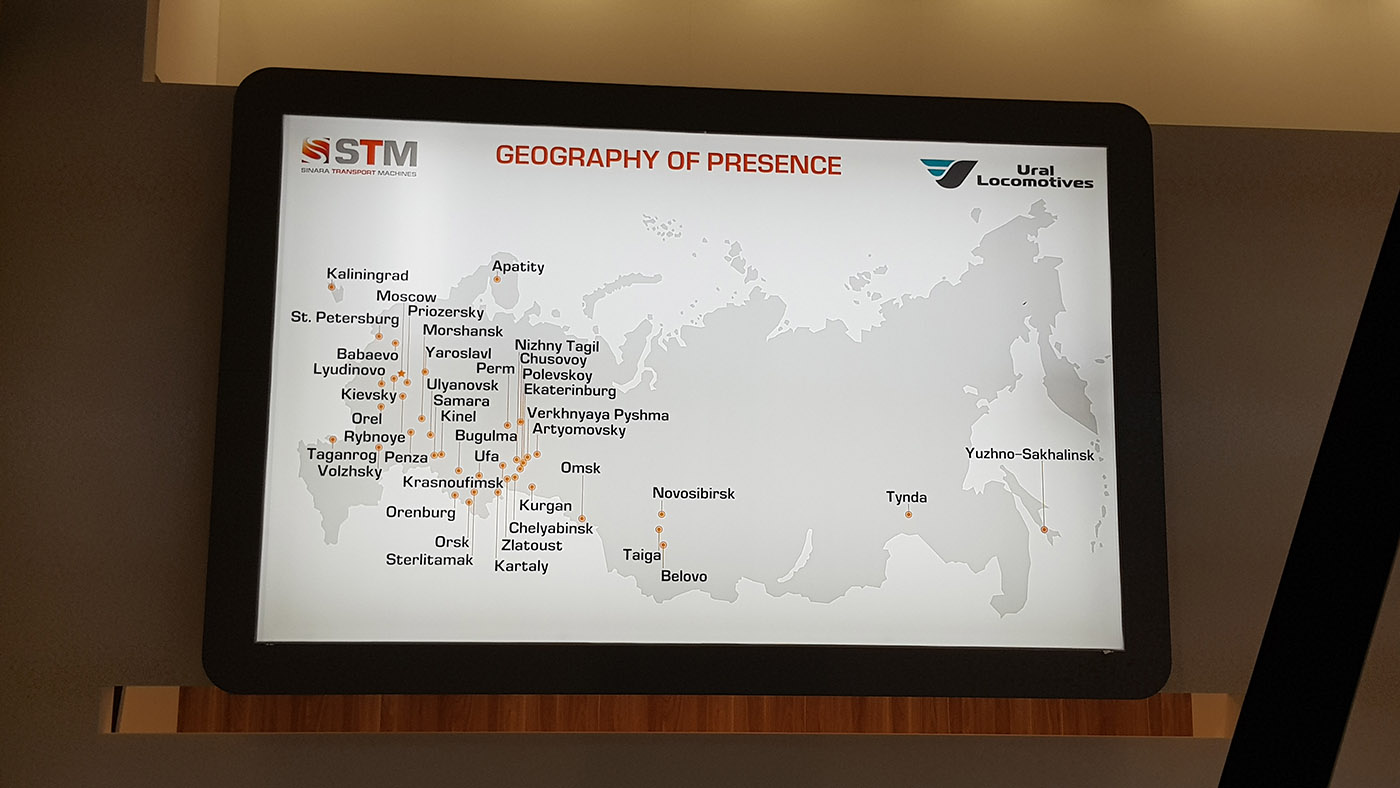
Wordplay in English, with Deutsche Bahn - a German company. Note that there are no footnotes with the translation, everyone understands everything. The integration of the English language in Germany is ten times higher than in Russia.
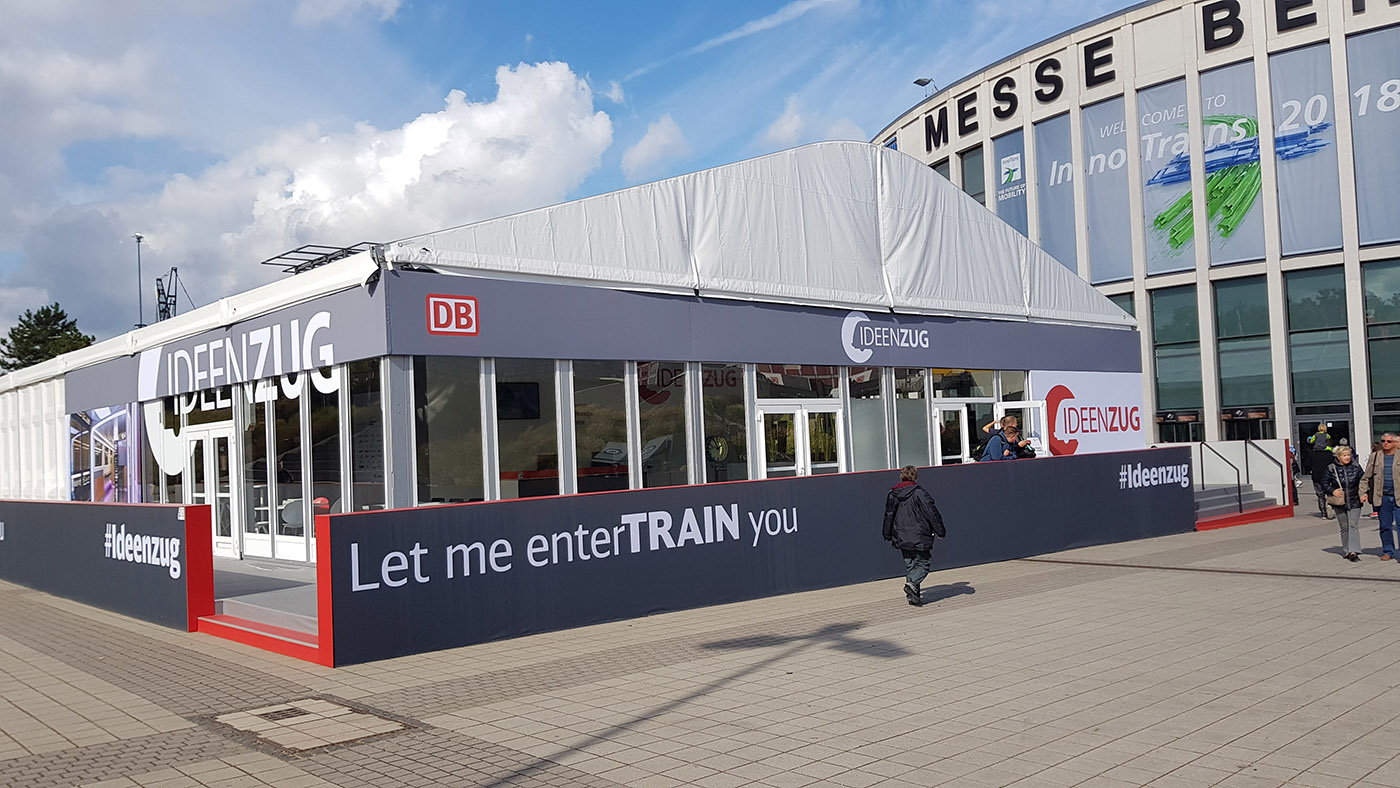
Finally, I will tell you about the Idea Train project. This is not just a train, it is a vision of the train of the future. Not the fact that ever the train will be just that. Doubt here causes a lot. But as an idea - why not? To visit such a train also means to become a part of a focus group, on which ideas run around that can change in a more effective way in the future.

The main idea is to make a whole leisure complex from a regular train. With the ability to order options of interest, as on water transport business class (yachts, luxury ships, etc.).
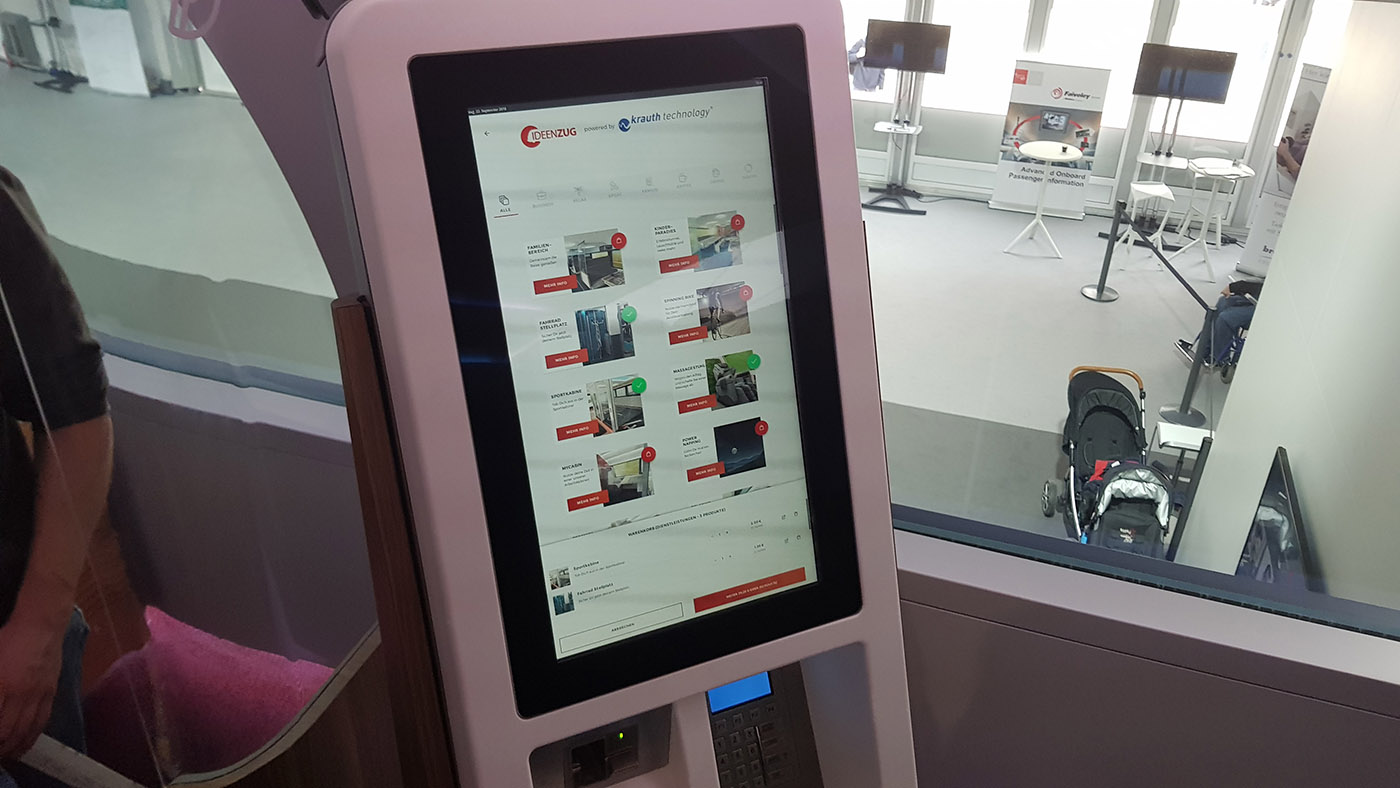
Coming by train? Why not work out on the simulator, strengthening the muscles and dropping those extra pounds.
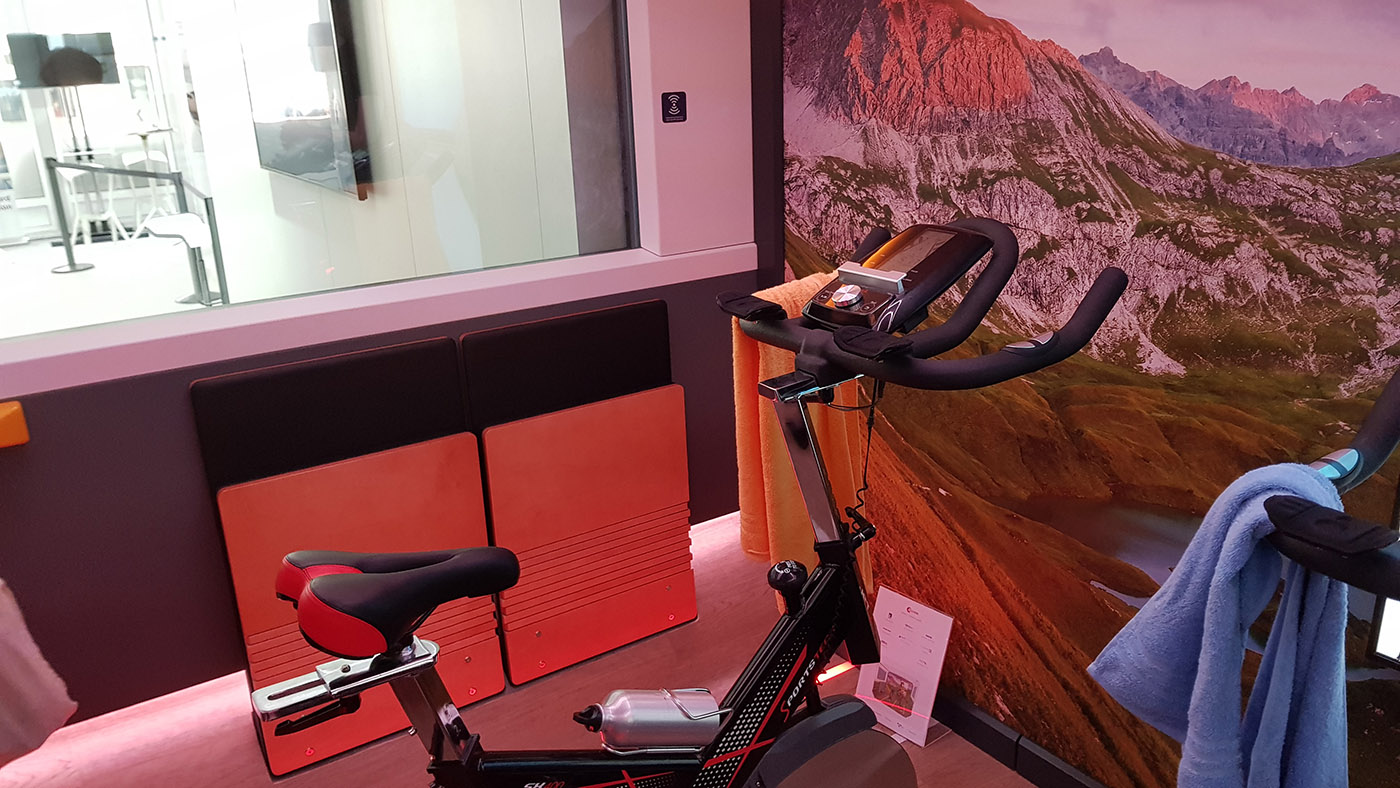
Too tired? Lie down in the capsule for sleep and rest, use the trip time to recuperate and comfortable sleep.
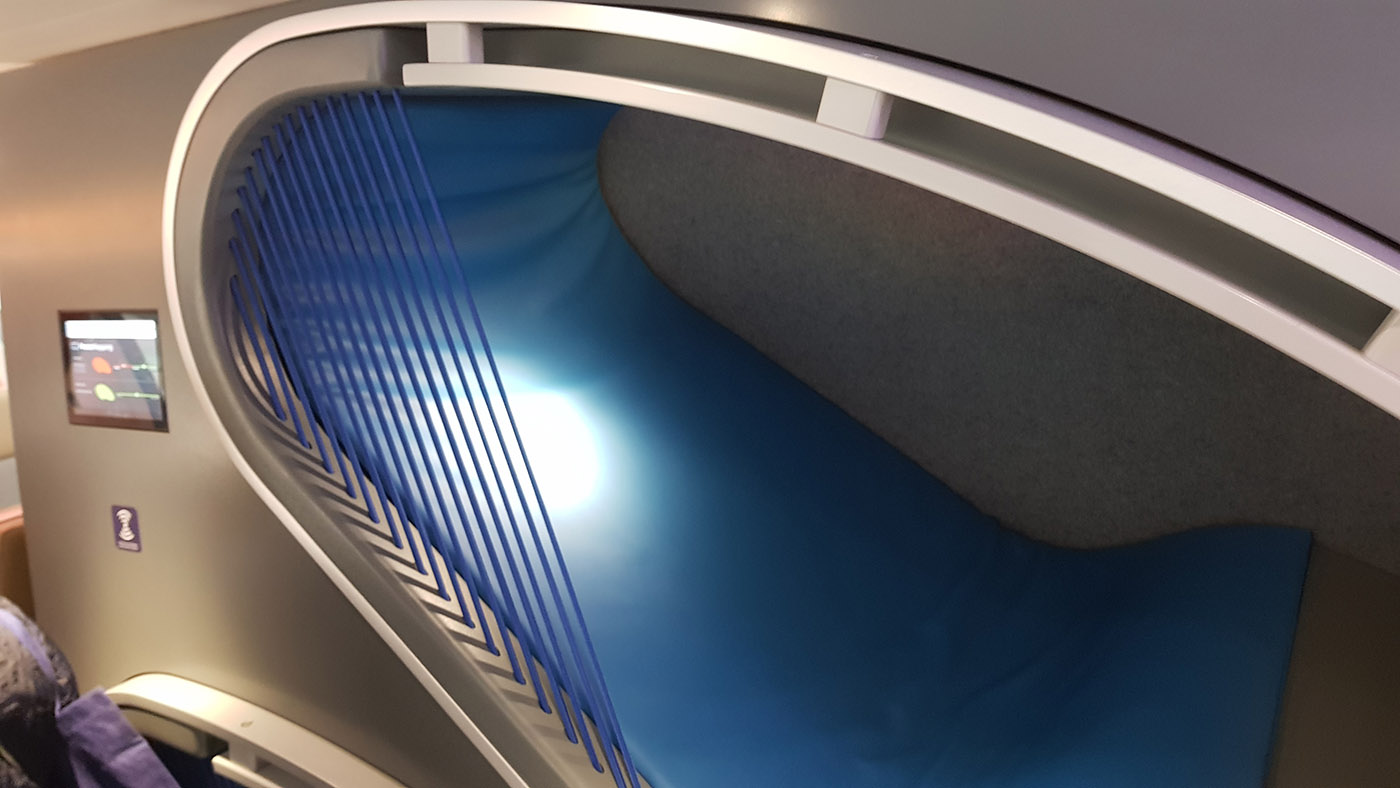
Are you in good company? Sit together at the table, he can perform wireless charging with his entire surface. Put your phones here, they will be charged to the maximum.
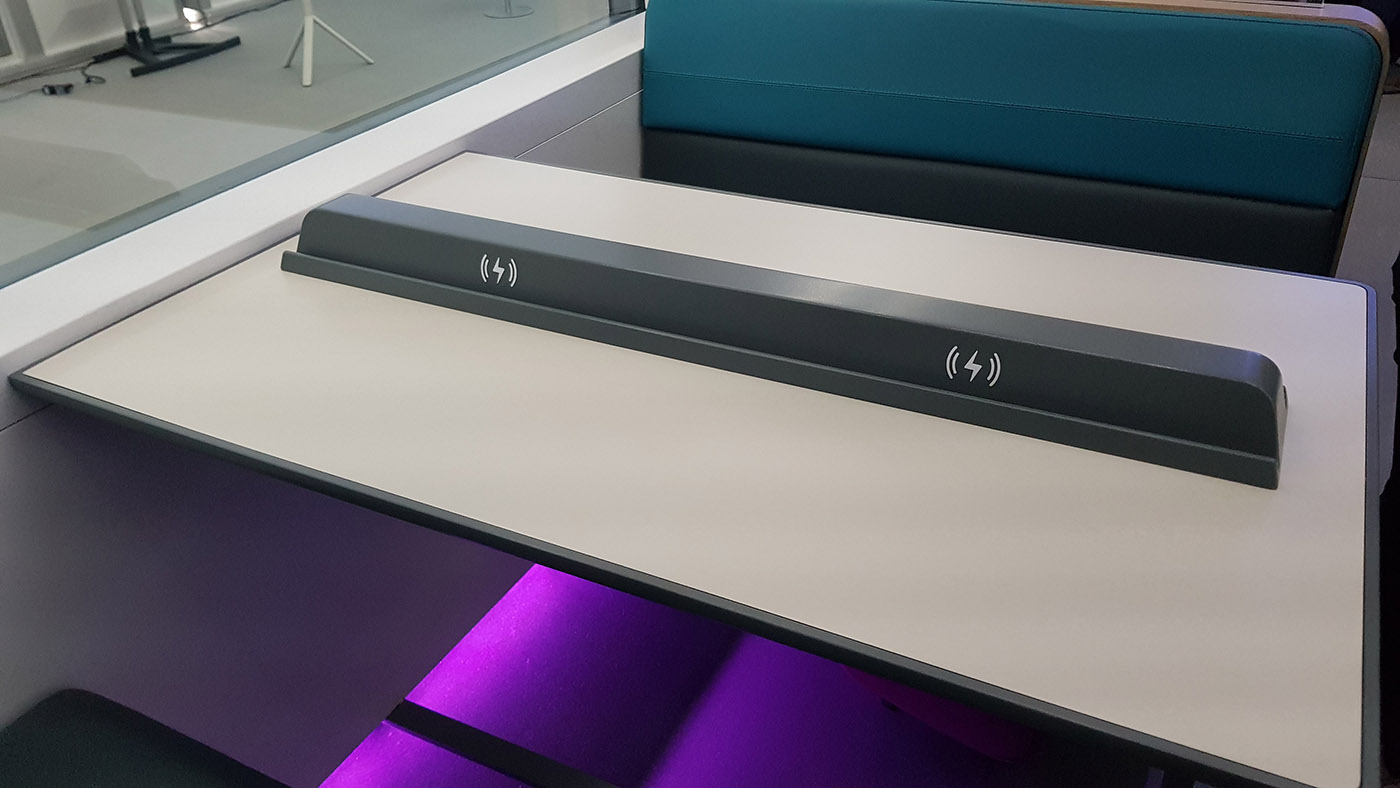
Are you traveling with children? On board is an excellent complex for leisure with children, here are toys, books, and various other activities, so that no one is bored.
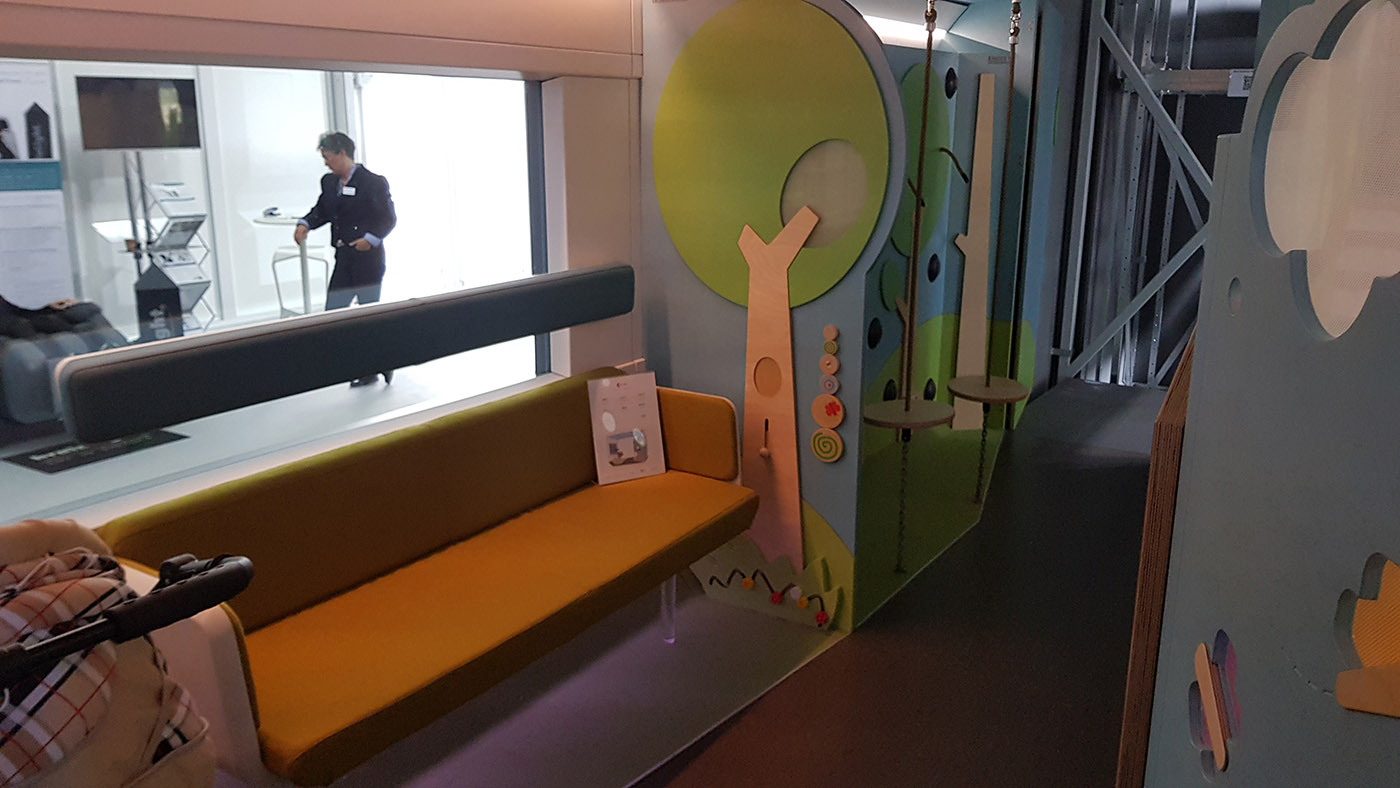
A lot of work?Great business lounge especially for you. No noise, no distractions from work, complete privacy.
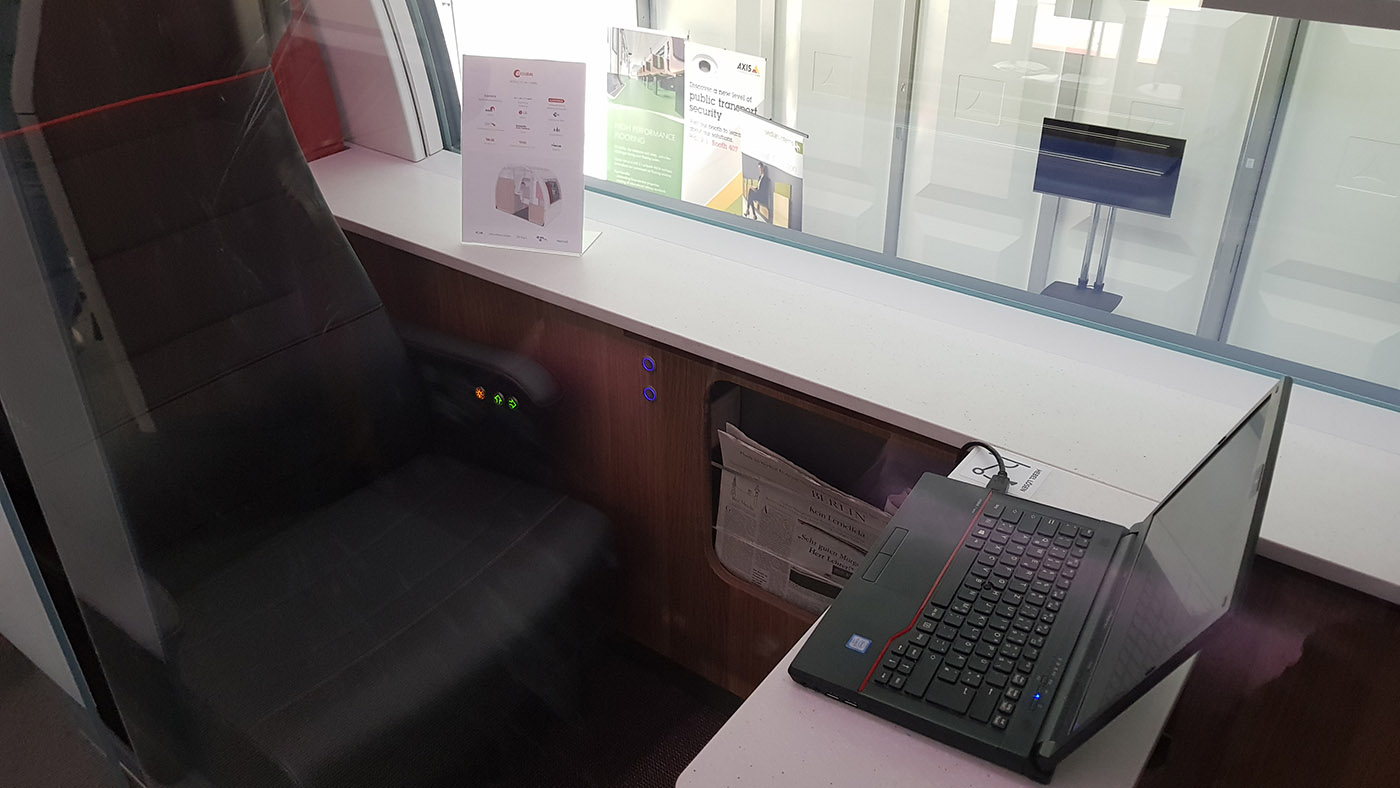
It is understood that all options can be forgotten both during the ticket purchase and during the trip - using the app on a smartphone or using a machine gun on the train.
Not interested in any of the above? Just stay in the usual common room, which is decorated not so boring and gray, as we are used to in the "classic" trains.

Agree, there is something in all these ideas! The entire Innotrans 2018 was entirely incredibly cool exhibition, where we managed to "touch" the future with our own hands and once again realize what an interesting present we all live in today.
And what exhibitions about future technologies did you manage to visit?
The article for Habr was prepared by Chris The Rebel (Vladimir Adoshev)
Source: https://habr.com/ru/post/431308/
All Articles